The New Nomads: Living Full-Time on the Road

In Drayton, North Dakota, a former San Francisco cabdriver, 67, labors at the annual sugar beet harvest. He works from sunrise until after sunset in temperatures that dip below freezing, helping trucks that roll in from the fields disgorge multi-ton loads of beets. At night he sleeps in the van that is his home.
In New Bern, North Carolina, a woman whose home is a teardrop-style trailer — so small it can be pulled with a motorcycle — is couch surfing with a friend while hunting for work. Even with a master’s degree, the 38-year-old Nebraska native can’t find a job despite filling out hundreds of applications in the past month alone. She knows the sugar beet harvest is hiring, but traveling halfway across the country would require more cash than she has. Losing her job at a nonprofit several years ago is one of the reasons she moved into the trailer in the first place. After the funding for her position ran out, she couldn’t afford rent on top of paying off student loans.
In San Marcos, California, a 30-something couple in a 1975 GMC motorhome is running a roadside pumpkin stand with a children’s carnival and petting zoo, which they had five days to set up from scratch on a vacant dirt lot. In a few weeks, they’ll switch to selling Christmas trees.
In Colorado Springs, Colorado, a 72-year-old van dweller who cracked three ribs doing a campground maintenance job is recuperating while visiting with family.
There have always been itinerants, drifters, hobos, restless souls. But now, in the third millennium, a new kind of wandering tribe is emerging. People who never imagined being nomads are hitting the road. They’re giving up traditional houses and apartments to live in what some call “wheel estate” — vans, secondhand RVs, school buses, pickup campers, travel trailers, and plain old sedans. They are driving away from the impossible choices that face what used to be the middle class. Decisions like: Would you rather have food or dental work? Pay your mortgage or your electric bill? Make a car payment or buy medicine? Cover rent or student loans? Purchase warm clothes or gas for your commute?
For many, the answer seemed radical at first.
You can’t give yourself a raise, but what about cutting your biggest expense? Trading a stick-and-brick domicile for life on wheels?
Some call them “homeless.” The new nomads reject that label. Equipped with both shelter and transportation, they’ve adopted a different word. They refer to themselves, quite simply, as “houseless.”
From a distance, many of them could be mistaken for carefree retired RVers. On occasions when they treat themselves to a movie or dinner at a restaurant, they blend with the crowd. In mindset and appearance, they are largely middle class. They wash their clothes at laundromats and join fitness clubs to use the showers. Many took to the road after their savings were obliterated by the Great Recession. To keep their gas tanks and bellies full, they work long hours at hard, physical jobs. In a time of flat wages and rising housing costs, they have unshackled themselves from rent and mortgages as a way to get by. They are surviving America.
But for them — as for anyone — survival isn’t enough. So what began as a last-ditch effort has become a battle cry for something greater. Being human means yearning for more than subsistence. As much as food or shelter, we require hope.
And there is hope on the road. It’s a byproduct of forward momentum. A sense of opportunity, as wide as the country itself. A bone-deep conviction that something better will come. It’s just ahead, in the next town, the next gig, the next chance encounter with a stranger.
As it happens, some of those strangers are nomads, too. When they meet — online, or at a job, or camping way off the grid — tribes begin to form. There’s a common understanding, a kinship. When someone’s van breaks down, they pass the hat. There’s a contagious feeling: Something big is happening. The country is changing rapidly, the old structures crumbling away, and they’re at the epicenter of something new. Around a shared campfire, in the middle of the night, it can feel like a glimpse of utopia.
As I write, it is autumn. Soon winter will come. Routine layoffs will start at the seasonal jobs. The nomads will pack up camp and return to their real home — the road — moving like blood cells through the veins of the country. They’ll set out in search of friends and family, or just a place that’s warm. Some will journey clear across the continent. All will count the miles, which unspool like a filmstrip of America. Fast-food joints and shopping malls. Fields dormant under frost. Auto dealerships, megachurches, and all-night diners. Featureless plains. Feedlots, dead factories, subdivisions, and big-box stores. Snowcapped peaks. The roadside reels past, through the day and into darkness, until fatigue sets in. Bleary-eyed, they find places to pull off the road and rest. In Walmart parking lots. On quiet suburban streets. At truck stops, amid the lullaby of idling engines. Then in the early-morning hours — before anyone notices — they’re back on the highway. Driving on, they’re secure in this knowledge:
The last free place in America is a parking spot.
There’s no clear count of how many people live nomadically in America. Full-time travelers are a demographer’s nightmare. Statistically, they blend in with the rest of the population, since the law requires them to maintain fixed — in other words, fake — addresses. No matter how widely they wander, nomads must be officially “domiciled” somewhere. Your state of residence is where you get vehicles registered and inspected, renew drivers’ licenses, pay taxes, vote, serve on juries, sign up for health insurance (except for those on Medicare), and fulfill a litany of other responsibilities. And living nowhere, it turns out, means you can live anywhere you want, at least on paper. So many folks opt for residency in the places with the fewest hassles — Florida, South Dakota, and Texas, which lack state income taxes, are longtime favorites — and use mail-forwarding services to stay in touch. The rules for becoming a South Dakotan are especially laid-back. Spend one night at a local motel and register with a South Dakota mail forwarding service. Then show both receipts to the state department of public safety and you’re in.
Many of these people call themselves workampers. One of them — a man I’ll call Don Wheeler — defined that term with great flair, writing in a Facebook direct message to me:
Workampers are modern mobile travelers who take temporary jobs around the U.S. in exchange for a free campsite — usually including power, water, and sewer connections — and perhaps a stipend. You may think that workamping is a modern phenomenon, but we come from a long, long tradition. We followed the Roman legions, sharpening swords and repairing armor. We roamed the new cities of America, fixing clocks and machines, repairing cookware, building stone walls for a penny a foot and all the hard cider we could drink. We followed the emigration west in our wagons with our tools and skills, sharpening knives, fixing anything that was broken, helping clear the land, roof the cabin, plow the fields, and bring in the harvest for a meal and pocket money, then moving on to the next job. Our forebears are the tinkers.
We have upgraded the tinker’s wagon to a comfortable motor coach or fifth-wheel trailer. Mostly retired now, we have added to our repertoire the skills of a lifetime in business. We can help run your shop, handle the front or back of the house, drive your trucks and forklifts, pick and pack your goods for shipment, fix your machines, coddle your computers and networks, work your beet harvest, landscape your grounds, or clean your bathrooms. We are the techno-tinkers.
The people Wheeler described make up an impressive labor force. Kampgrounds of America (KOA), a major employer of workampers, hires some 1,500 couples each year for its resorts and franchises across the country, a representative told AARP. Workamper News, a bimonthly magazine whose website features a popular job-listing service, claims to reach 14,000 members, with more joining all the time.
Of all the programs seeking workampers, the most aggressive recruiter has been Amazon’s CamperForce. “Jeff Bezos has predicted that, by the year 2020, one out of every four work campers in the United States will have worked for Amazon,” read one slide in a presentation for new hires.
Workampers are plug-and-play labor, the epitome of convenience for employers in search of seasonal staffing. They appear where and when they are needed. They bring their own homes, transforming trailer parks into ephemeral company towns that empty out once the jobs are gone. They aren’t around long enough to unionize. On jobs that are physically difficult, many are too tired even to socialize after their shifts.
They also demand little in the way of benefits or protections. On the contrary, among the more than 50 such laborers I interviewed in my first year of reporting on workampers, most expressed appreciation for whatever semblance of stability their short-term jobs offered. Take 57-year-old Joanne Johnson, who was dashing upstairs at Amazon’s Campbellsville facility when she tripped and fell, striking her head on a conveyor-belt support bar. She was bandaged up at AmCare — an in-house medical facility — and then rushed to an emergency room. The episode left her with two black eyes and nine stitches along her hairline. “They let me continue working. They didn’t fire me,” Johnson recalled warmly.
I wondered why a company like Amazon would welcome older candidates for jobs that seem better suited to younger bodies. “It’s because we’re so dependable,” suggested Johnson. “We know that if you commit to something, you do your best to get that job done. We don’t take days off unless we have to.” (While recuperating from her head wound, Johnson missed only one scheduled workday. It was unpaid.)
The folks who run CamperForce reiterate the belief that older workers bring a good work ethic. “We’ve had folks in their 80s who do a phenomenal job for us,” said Kelly Calmes, an administrator for the program in Campbellsville, during an online job seminar hosted by Workamper News. “The benefit to our workamping population being, for the most part, a little bit older is that you guys have put in a lifetime of work. You understand what work is. You put your mind to the work, and we know that it’s a marathon; it’s not a sprint. It’s kind of like The Tortoise and the Hare. We have some of our younger folks who will race through. You guys are pretty methodical — you just kind of work as you go, and work as you go — and at the end of the day, believe it or not, you both cross the finish line at about the same time.”
Many of the workers I met in the Amazon camps were part of a demographic that in recent years has grown with alarming speed: downwardly mobile older Americans. Monique Morrissey, an economist at the Economic Policy Institute, spoke with me about the unprecedented nature of this change. “We’re facing the first-ever reversal in retirement security in modern U.S. history,” she explained. “Starting with the younger baby boomers, each successive generation is now doing worse than previous generations in terms of their ability to retire without seeing a drop in living standards.”
That means no rest for the aging. Nearly nine million Americans 65 and older were still employed in 2016, up 60 percent from a decade earlier. Economists expect those numbers — along with the percentage of seniors in the labor force — to keep rising. A recent poll suggests that Americans now fear outliving their assets more than they fear dying. Another survey finds that, although most older Americans still view retirement as “a time of leisure,” only 17 percent anticipate not working at all in their later years.
“Over the last generation, we have witnessed a massive transfer of economic risk from broad structures of insurance, including those sponsored by the corporate sector as well as by government, onto the fragile balance sheets of American families,” Yale political scientist Jacob S. Hacker writes in his book The Great Risk Shift. The overarching message: “You are on your own.”
All of which is to say that Social Security is now the largest single source of income for most Americans 65 and older. But it’s woefully inadequate.
Nearly half of middle-class workers may be forced to live on a food budget of as little as $5 a day when they retire, according to Teresa Ghilarducci, an economist and professor at the New School in New York City. “I call it ‘the end of retirement,’” she said in an interview. Many retirees simply can’t survive without some sort of paycheck.

Millions of Americans are wrestling with the impossibility of a traditional middle-class existence. In homes across the country, kitchen tables are strewn with unpaid bills. Lights burn late into the night. The same calculations get performed again and again, over and over, through exhaustion and sometimes tears. Wages minus grocery receipts. Minus medical bills. Minus credit card debt. Minus utility fees. Minus student loan and car payments. Minus the biggest expense of all: rent.
In the widening gap between credits and debits hangs a question: What parts of this life are you willing to give up so you can keep on living?
Like the nomads, millions of Americans are being forced to change their lives, even if the transformations are less outwardly radical. There are many ways to parse the challenge of survival. This month, will you skip meals? Go to the ER instead of your doctor? Postpone the credit card bills, hoping they won’t go to collections? Put off paying electric and gas charges, hoping the light and heat will stay on? Let the interest accumulate on student and car loans, hoping someday you’ll find a way to catch up?
These indignities underscore a larger question: When do impossible choices start to tear people — a society — apart?
It’s already happening. The cause of the unmanageable household math that’s keeping people up at night is no secret. The top 1 percent now makes 81 times what those in the bottom half do, when you compare average earnings. For American adults on the lower half of the income ladder — some 117 million of them — earnings haven’t changed since the 1970s.
This is not a wage gap — it’s a chasm. And the cost of that growing divide is paid by everyone.
A deepening class divide makes social mobility all but impossible. The result is a de facto caste system. This is not only morally wrong but also tremendously wasteful. Denying access to opportunity for large segments of the population means throwing away vast reserves of talent and brainpower. It’s also been shown to dampen economic growth.
The most widely accepted measure for calculating income inequality is a century-old formula called the Gini coefficient. It’s a gold standard for economists around the globe, along with the World Bank, the CIA, and the Paris-based Organization for Economic Cooperation and Development. What it reveals is startling. Today, the United States has the most unequal society of all developed nations. America’s level of inequality is comparable to that of Russia, China, Argentina, and the war-torn Democratic Republic of the Congo.
And as bad as the situation is now, it’s likely to get worse. That makes me wonder: What further contortions — or even mutations — of the social order will appear in years to come? How many people will get crushed by the system? How many will find a way to escape it?
***
Excerpted from Nomadland: Surviving America in the Twenty-First Century by Jessica Bruder. © 2017 by Jessica Bruder. Used with permission of the publisher, W.W. Norton & Company, Inc. All Rights Reserved.
Jessica Bruder is an award-winning journalist whose work focuses on subcultures and the dark corners of the economy. She has written for Harper’s, The New York Times, and The Washington Post. Bruder teaches at the Columbia School of Journalism.
This article is featured in the July/August 2018 issue of The Saturday Evening Post. Subscribe to the magazine for more art, inspiring stories, fiction, humor, and features from our archives.
News of the Week: The Sounds of Summer, Ghost Towns, and 10 Recipes (Yes, 10!) for Onion Rings
Beep! Crack! Vrooooom!

I don’t have air conditioning in my apartment, so in the summer I keep my windows open all the time. I live in a neighborhood with a lot of businesses and traffic, not far from both downtown and the highway. That means, unlike during fall and winter, every sound that happens outside, I hear in my apartment. I hear the big rig trucks as they go past my windows, the cars speeding through the intersection, the fire trucks, even people as they walk by and engage in conversation (something that can get rather boisterous on a Friday or Saturday night after they’ve had plenty of liquid refreshment). Oh, and a lot of car horns. Right this moment, there’s a guy in a Toyota in front of my building with his hand on the horn, impatient about something or someplace to go.
We always think of the differences in seasons only when it comes to weather (a crack of thunder almost made me jump out of my shoes a couple of nights ago), but what we hear is different too, and summer brings its own sounds, whether it’s a baseball meeting a baseball bat, the music of a Ferris wheel, or the march of a parade going by. I don’t mind the sound of any of those things, because unlike car horns, they’re associated with happy things. But all I can think about on this first full day of summer, the day when the kids are ecstatic and everyone’s thoughts turn to warm temps and shorts and barbecues, is that I can’t wait until the day a few months from now when I close my windows and everything gets a little quieter.
I could write about the smells of summer too, but I’d rather not think about those.
Hey, Let’s Buy a Town
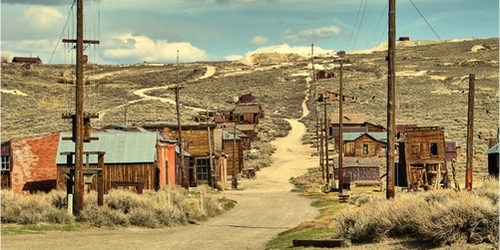
Do you have an extra $925,000? Have I got a ghost town for you.
Cerro Gordo, an abandoned mining town in California five hours north of Los Angeles, is for sale. It was founded in 1865 (the year Lincoln was assassinated) and was once the state’s largest producer of silver and lead.
You get 314 acres of land, plus 22 buildings, including a hotel, a saloon, and a chapel. You can shoot your own westerns there, or if you’re really rich (which I assume you are if you’re spending almost a million dollars on a town), you could fix it up and actually make it a non-ghost town again, one were people live and work. Imagine owning a town!
We could start a GoFundMe page for it. Who’s in? We could rename the town “Postville” or “Rockwell.”
Abraham Lincoln for Sale
Ghost towns aren’t the only historic things up for sale. Several of President Abraham Lincoln’s items are on display at the Lincoln Presidential Library and Museum in Springfield, Illinois, and many of the 1500 artifacts, including his hat, gloves, and pen, might be put up for auction to help pay off the museum’s loan debt. Needless to say, not everyone is happy about it. Here’s the story from CBS This Morning.
Corresponding for 40 Years … Via Cassette Tape!

I’ve talked many times here about old-fashioned correspondence and communicating with friends and family in ways that don’t involve a smartphone or social media. I was talking about handwritten letters and using the landline telephone. Not for one second did I ever think that people still corresponded via cassette tape.
That’s what these two Massachusetts women have been doing for 40 years. They started it after one of the women moved away (and to bring this back to something I mentioned above, they started it the day Elvis Presley died, August 16, 1977). Sure, they could use email or texts, but why stop something fun you’ve been doing for over four decades, where you can actually hear each other’s voices and keep up a tradition?
I’m all for this. The only question I have is, where the heck do you buy cassette tapes? I think I know where to get typewriter ribbons more than I do cassette tapes.
RIP D. J. Fontana, Matt “Guitar” Murphy, and Georgann Johnson
J. Fontana was Elvis Presley’s drummer. He played on such classic songs as “Hound Dog,” “Don’t Be Cruel,” “Heartbreak Hotel,” and “Jailhouse Rock” and appeared with Elvis on The Ed Sullivan Show and the famous “68 Comeback Special” in 1968. He died last Thursday at the age of 87.
Speaking of Elvis, here’s Bill Newcott on a new DVD set of the King’s best movies.
Matt “Guitar” Murphy was another music icon, a legendary blues musician probably best known for his work in The Blues Brothers. He also played with such people as Muddy Waters and Howlin’ Wolf. He died last Friday at the age of 88.
Georgann Johnson was a veteran actress who had regular roles on Dr. Quinn, Medicine Woman, and Mr. Peepers (she played Tony Randall’s wife). She also had roles in movies like Midnight Cowboy, Shoot the Moon, and the classic nuclear war TV movie The Day After. She also appeared in many Broadway productions. Johnson died June 4 at the age of 91.
Quote of the Week
“Not very tall. Or big. Just sayin’. I kinda liked it. Sort of.”
—a reviewer of the Great Wall of China, one of the quotes in this smart New York Times piece about the world of negative online reviews
This Week in History
Stan Laurel Born (June 16, 1890)
My favorite story about Oliver Hardy’s partner involves Dick Van Dyke. He accidentally came across Laurel’s number in the phone book one day. It was a long shot that it was actually the Stan Laurel, but … it was! He was living in an apartment in Santa Monica. Van Dyke and Laurel talked on the phone and became good friends. Van Dyke even gave the eulogy at Laurel’s funeral in 1965.
Statue of Liberty Arrives in New York (June 17, 1885)
Here’s what Lady Liberty looked like when she arrived at New York Harbor (click through to see the enlarged photos on Twitter):
#OTD in 1885, the Statue of Liberty arrived at the New York Harbor. Designed by French sculptor Frédéric Auguste Bartholdi, this massive copper statue became a symbol of freedom and opportunity to immigrants arriving from overseas. #oldestallies #fromthearchives pic.twitter.com/8AxscAxouz
— French Embassy U.S. (@franceintheus) June 17, 2018
This Week in Saturday Evening Post History: School’s Out (June 21, 1958)
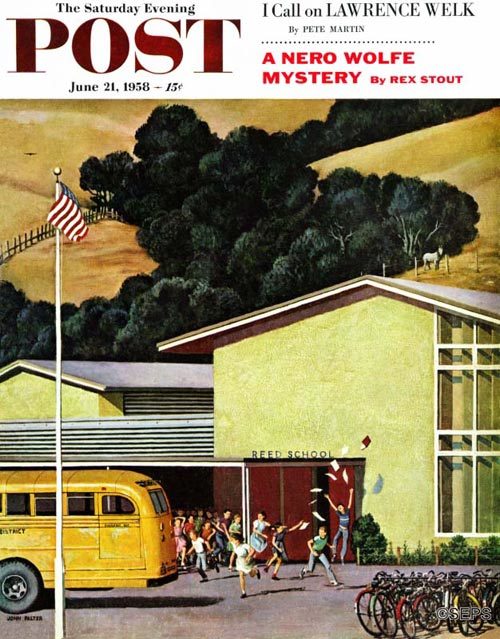
John Falter
June 21, 1958
I love the composition John Falter has here. He could have concentrated on the kids in close-up, their faces locked in big smiles. But he decided to do it from a little further away, capturing the school’s flag, the bus, and the bikes in the rack. If you look closely, you can see one of the kids throwing papers in to the air in celebration.
By the way kids, it’s already June 22. Enjoy the summer now, because you’ll be back in school before you know it!
Post Writers You Should Read
On the cover above is a Nero Wolfe story by Rex Stout, titled “Murder Is No Joke,” which was serialized in the Post in three different issues: June 21, June 28, and July 5, 1958. The story was later retitled “Frame-Up for Murder” and was part of the novella collection Death Times Three, released in 1985. You can read it for free at the Internet Archive.
After two films and several radio adaptations, there were two different TV shows based on Nero Wolfe, one a short-lived A&E series starring Maury Chaykin and Timothy Hutton and the other an even shorter-lived NBC series starring William Conrad and Lee Horsley, as well as various TV movies and pilots that never went anywhere, including one that was supposed to star Orson Welles.
Today Is National Onion Rings Day
Onion rings are a summer food, right? You can get them everywhere, but I associate them with carnivals and amusement parks, something you have along with fried dough and corn dogs and cotton candy on a stick. Something in a box you hold in your hands as you walk around the fairgrounds, looking for the next game to play or ride to ride.
They come in two distinct varieties: crunchy and wimpy. The crunchy are thick and crispy and really hold up. The ones I get in a local restaurant are thin and limp and just not the same (though they sure are tasty). Of course, you can make your own at home, too. Here are ten recipes — some with eggs in the middle and some wrapped in bacon — from the National Onion Association.
On a related note, yes, there is a National Onion Association.
Next Week’s Holidays and Events
International Body Piercing Day (June 28)
If you’ve ever wanted to pierce you body, today is the day to do it.
Top 10 Reads for Summer 2018
Every month, Amazon staffers sift through hundreds of new books searching for gems. Here’s what Amazon editor Chris Schluep chose especially for Post readers this June.
Fiction
The Outsider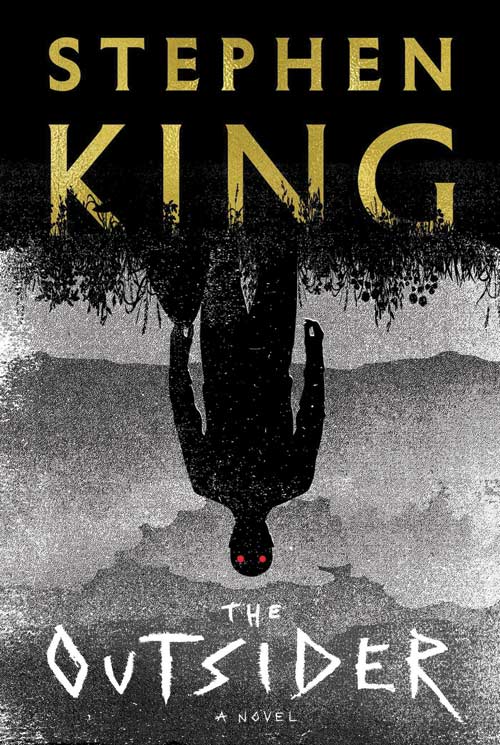
When a boy is found murdered in the town park, all signs point to Terry Maitland, a pillar of the community. King takes us on a suspenseful, shocking investigation of what really happened.
Scribner
The Perfect Couple
by Elin Hilderbrand
Hilderbrand’s Nantucket novels may be the perfect summer reads. In her latest, she sets out a lavish wedding with one hitch: The bride-to-be has been found dead in Nantucket Harbor.
Little, Brown, and Co.
 Warlight
Warlight
by Michael Ondaatje
A moving novel set in London during the decade after WWII, featuring a 14-year-old boy and his older sister, by the author of The English Patient.
Knopf
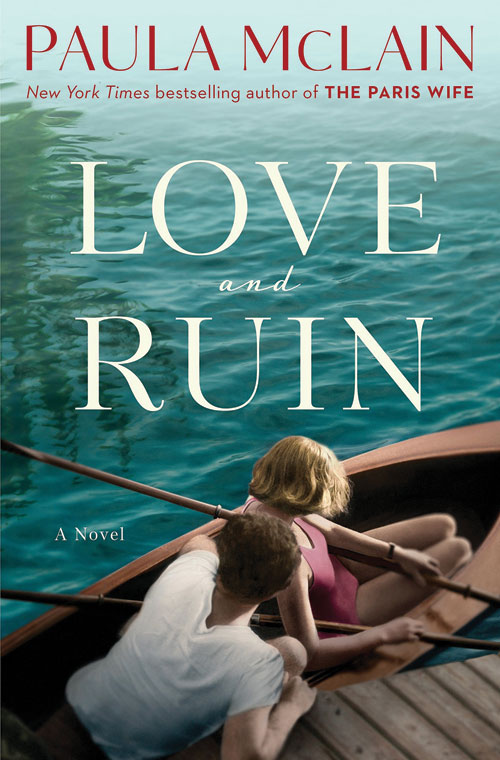 Love and Ruin
Love and Ruin
by Paula McLain
The author of The Paris Wife returns to the subject of Ernest Hemingway, turning her focus on his passionate, stormy marriage to Martha Gellhorn.
Ballantine Books
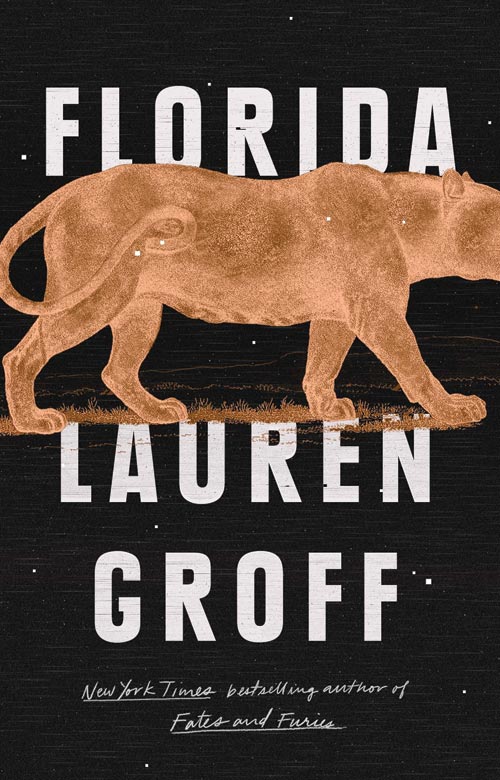 Florida
Florida
by Lauren Groff
From the celebrated author of Fates and Furies and The Monsters of Templeton, a collection of perceptive and deeply moving short stories, all set in Florida.
Riverhead Books
Nonfiction
 How to Change Your Mind
How to Change Your Mind
by Michael Pollan
The Omnivore’s Dilemma’s author set out to research psychedelic drugs and consciousness, he hadn’t planned to write such a personal book, an elegant blend of science, memoir, history, and medicine.
Penguin
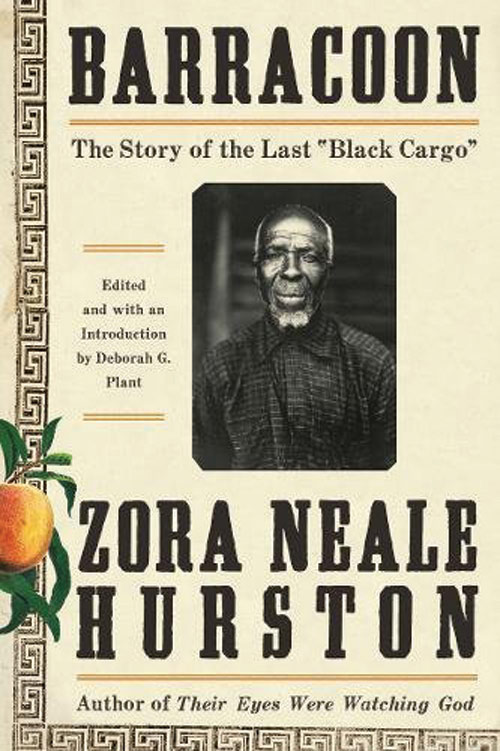 Barracoon
Barracoon
by Zora Neale Hurston
In 1927 and again in 1931, Hurston went to Plateau, Alabama, to interview Cudjo Lewis, one of the last known survivors of the slave trade. This is his story.
Amistad
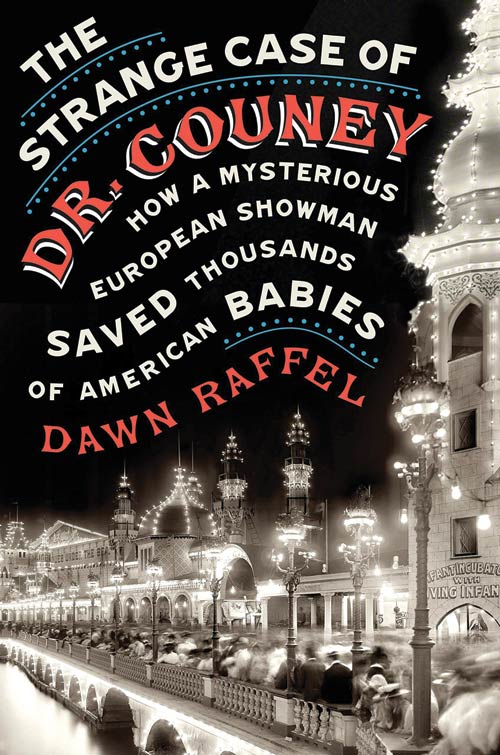 The Strange Case of Dr. Couney
The Strange Case of Dr. Couney
by Dawn Raffel
A hundred years ago, hospitals couldn’t save premature babies. But on boardwalks and at World’s Fairs, a strange carnival showman saved the lives of thousands of infants. A compelling historic mystery uncovered.
Blue Rider Press
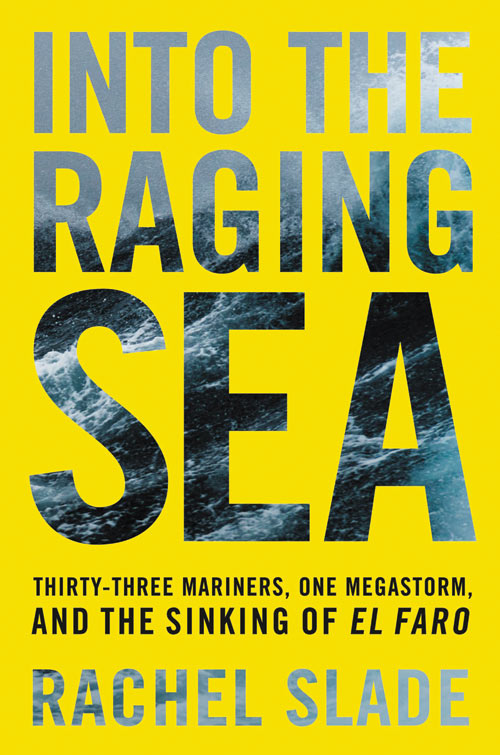 Into the Raging Sea
Into the Raging Sea
by Rachel Slade
On the first of October 2015, Hurricane Joaquin barreled into the Bermuda Triangle and swallowed the container ship El Faro whole. This maritime classic explores the events leading up to that tragedy.
Ecco
 Robin
Robin
by Dave Itzkoff
The New York Times culture reporter has written the definitive biography of Robin Williams, one of America’s most beloved and misunderstood entertainers
Henry Holt
News of the Week: Saving Bookstores, Star Wars, and Some Guy Ate 30,000 Big Macs
Barnes & Noble

I’ve mentioned here before that if You’ve Got Mail were made today, The Shop Around the Corner would team up with the Fox Books superstore and go up against Amazon (I smell sequel!).
I thought of that after reading this New York Times op-ed by David Leonhardt on how we need to save Barnes & Noble. It seems like only yesterday when B&N (and other big chain bookstores) were seen as the bad guy. Now, with Amazon taking over everything, and the major chains going away, we’re getting nostalgic for the big chains. And well we should be. I want brick-and-mortar stores to survive, even if I love Amazon at the same time. (It’s interesting how the number of indie bookstores is increasing in this age of online book sales.)
The only problem I have with Leonhardt’s piece is a paragraph near the end, where he mentions that “publishers are focusing on big name writers” and “the number of professional authors has declined.” Publishers have always put their money and energies behind the bigger name authors, and I think there are probably more writers right now than ever; they’re just doing more on their own.
Now, a Story about a Family That Wants to Rule the Galaxy
Solo, the new Star Wars movie directed by Ron Howard, comes out on May 25. It was announced this week that the fifth season of Arrested Development launches on Netflix on May 29. Since Howard is the narrator of Arrested Development, it makes sense that there would be a way to combine the two. And here it is.
In other Star Wars news, a set of twins born on May 4 (aka “Star Wars Day”) was given the names of characters from the series to celebrate the day they were born. They were named Jabba the Hutt and Chewbacca (just kidding — they were given the middle names Luke and Leia).
Come, Let’s Mix Where Rockefellers Walk with Sticks
How much would you pay for an original Matisse? How about $80 million? That’s just one of the sales in this week’s auction of the David and Peggy Rockefeller art collection at Christie’s in New York City.
The three-day auction wasn’t even finished yet when they broke the record for the most money brought in from an art collection. On the first day, the total was at $650 million.
A lot of the winners were anonymous bidders. I can promise you I wasn’t one of them, though I did once own an album that had Edward Hopper’s Nighthawks on the cover.
And the No. 1 Rock Artist of All Time Is …
You wouldn’t think that someone would take the time to rank all 214 members of the Rock and Roll Hall of Fame from best to worst, but you’d be wrong. Bill Wyman did it for Vulture.
It’s a massive undertaking, so kudos to Wyman for even attempting it. He even gives his list of the artists that aren’t in the HoF but should be. Now, all lists are subjective, but this one is especially so, and I’m sure it will lead to a lot of arguments. Wyman says a lot of things about certain artists that fans of those artists are going to hate, and in some cases, his arguments are inconsistent. I mean, picking Chuck Berry over the Beatles? The Ramones over Buddy Holly? Jeff Beck and Hall & Oates should be higher on the list, and I know Bon Jovi fans aren’t going to be happy at all (though I think they should be number 215 in this list of 214). Let me know in the comments below what you think of the list.
You Want Fries with That?
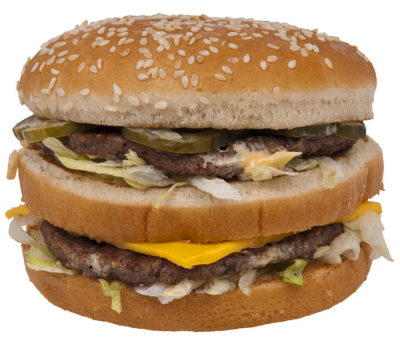
I once stopped at a Burger King and was informed that I couldn’t have a cheeseburger because they were all out of buns. I was rather stunned. A burger place that runs out of buns? That’s like Dunkin’ Donuts running out of coffee.
Don Gorske broke a record recently for eating burgers, not at Burger King, but at McDonald’s. He finished his 30,000th Big Mac last Friday at the same Fond du Lac, Wisconsin, location where he ate his first one in 1972. I guess this answers the eternal question, “How many years does it take to eat 30,000 Big Macs?”
With all of the publicity that Gorske’s eating has garnered, McDonald’s should give him free meals for life.
And if you’re wondering what it has done to him, note that Gorske has run marathons and probably has better cholesterol than you or I.
IMHO, This Controversy Is Ridiculous
I had no idea there was a debate going on about what that the abbreviation IMHO stands for. Many people think it stands for “In My Honest Opinion.” It actually stands for “In My Humble Opinion,” as this piece from The Atlantic explains.
BuzzFeed is conducting a poll to find out what readers think is right, and like most of the things that BuzzFeed does, the results are wrong. As I type these words, “In My Honest Opinion” has 57 percent of the vote, and “In My Humble Opinion” has 43 percent. Either BuzzFeed readers don’t know what they’re talking about, or they’re just clicking the wrong choice on purpose to mess with the results. The latter would be funny, but I sense it’s the former.
For the record, “LOL” stands for “laugh out loud,” “BRB” is “be right back,” and “tl;dr” stands for “this article is too long so I didn’t read it but I have an opinion on it anyway.”
RIP Art Paul, George Deukmejian, Anne V. Coates, Dick Williams, and Gayle Shepherd
Art Paul was the first art director for Playboy and created the famous bunny logo. He died last Saturday at the age of 93.
George Deukmejian was the governor of California for two terms, from 1983 to 1991. He died Tuesday at the age of 89.
Anne V. Coates edited many classic movies, including Lawrence of Arabia, The Elephant Man, Murder on the Orient Express, and Out of Sight. She received several Oscar nominations and was given an honorary award in 2016. She died Tuesday at the age of 92.
Dick Williams was a singer in the Williams Brothers singing quartet, which included his brothers Bob, Don, and Andy, who later went on to solo success. He died Saturday at the age of 91.
Gayle Shepherd was a member of another famous sibling group, the Shepherd Sisters, best known for their hit song “Alone (Why Must I Be Alone).” She died Monday at the age of 81.
Quote of the Week
“Movie reviews, they’re not even movie reviews anymore, they’re just ‘how come you made the movie you made and not the one I would have made?’”
—Bill Maher, ranting about how everyone seems to get so easily offended these days (warning, some salty language!)
This Week in History
Alan Shepard Becomes First American in Space (May 5, 1961)
Shepard went into space aboard the Mercury spacecraft Freedom. He made a second trip into space in 1971 as part of Apollo 14, along with astronauts Stuart Roosa and Edgar Mitchell.
Three Stooges Debut (May 5, 1934)
The very first Three Stooges short was titled Woman Haters, and the entire thing is done in rhyme and song. It’s one of the few Stooge shorts where they don’t use the names Moe, Larry, and Curly. Their names here are Tom, Jim, and Jackie.
Look for Walter Brennan as a train conductor. Co-star Marjorie White, who plays Larry’s bride, was killed in an auto accident just a year after Woman Haters was released.
This Week in Saturday Evening Post History: Father’s Homework (May 7, 1960)
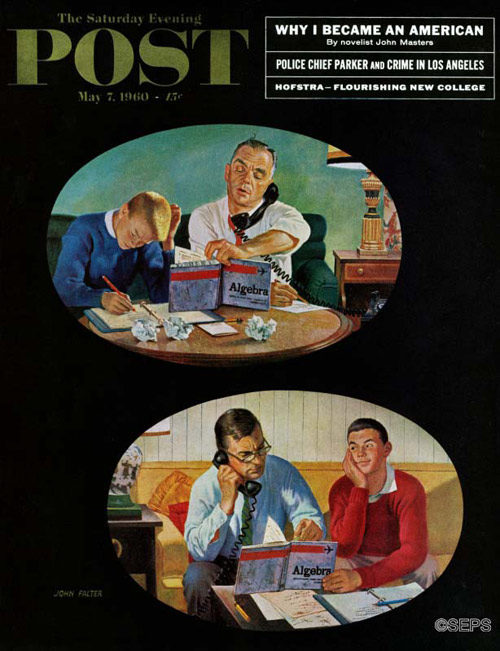
John Falter
May 7, 1960
Have you ever had that dream where you’re back in school and you have a big test, and if you don’t pass it you won’t graduate? I haven’t had a dream like that in many years, but I did have it throughout my 20s and 30s, and it disturbed me each time. During the dream, I could actually feel the dread of being stuck back in school. I’d wake up relieved that I wasn’t actually back in school but worried about going back to sleep, because I didn’t want the dream to continue. I guess I assumed my “waking up” was like a commercial break in the story.
Anyway, here’s a cover by John Falter depicting two dads trying to help their sons with algebra homework. I had to repeat algebra.
How to Make a Big Mac at Home
Did you know that there are several websites and books dedicated to the art of replicating restaurant food at home? One of the most famous is Top Secret Recipes. Here’s their attempt at copying the recipe for a McDonald’s Big Mac. Besides ground beef and a seeded bun, you’ll need dill pickles, iceberg lettuce, and their copycat recipe for the Big Mac special sauce.
And after you eat it, just think: only 29,999 more to go!
Next Week’s Holidays and Events
Mother’s Day (May 13)
Here’s a Post article on Anna Jarvis, known as “the woman behind Mother’s Day.” Make sure you get something nice for your mom this Sunday. And by “nice,” I don’t mean something you find at the last minute at the CVS checkout counter.
But when you do buy her something, remember: Mother’s no mechanic!
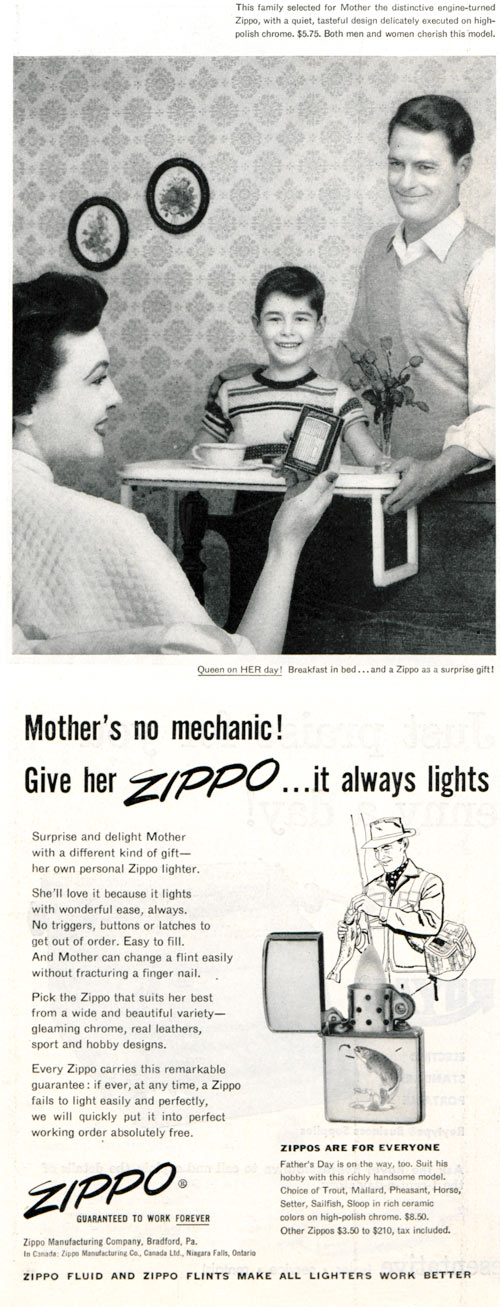
News of the Week: Vanishing Signatures, Things You Shouldn’t Do in Public, and Strange Burgers
Sign Here
Supposedly, in some horrible future where pen and paper will be viewed the same way we now view butter churns and 8-track tapes, signatures are going to go away. Instead, we’re going to use electronic signatures, fingerprints, retinal scans, and other technological “improvements” that will replace the burden of taking two seconds to sign our names to something. I am going to fight this to my last breath.
That’s why I was happy to read this defense of the signature in The New York Times from Steven Petrow. He talks about how the major credit card companies are getting rid of signatures and how he himself didn’t even do a traditional signature when he bought a home last year.
I don’t want to live in a world where signatures go away. I think that’s why I consciously fight against a lot of this stuff, even if I have to use some of it because I have no other choice. But as long as cursive handwriting and signatures don’t lead to a lengthy jail sentence, I will continue to sign contracts with a pen and send out paper Christmas cards and thank-you notes. To paraphrase Charlton Heston, they can have my checkbook when they pry it from my cold, dead hands.
Spitting and Swearing
While we’re on the subject of seemingly old-fashioned things like signatures, how about good manners and the way we dress?
While surfing around Twitter, which one of these days I’m going stop surfing around because I hate it, professor and author Tom Nichols wrote a series of tweets bemoaning what people seem to think are okay things to do, say, or wear in public (scroll down his feed here). Among the things he can’t stand are adults wearing sweatpants and baseball caps everywhere, swearing in public, wearing shorts to dinner or church, and spitting.
I agree with all of those (side note: I have never once spat in my life — true story), and I would add people who put their feet on the seat in front of them at the movies, people who don’t return shopping carts to the parking lot corral, and people who chew loudly with their mouths open. As for hats, I wouldn’t mind seeing the return of dress hats like fedoras, but guys, you’d have to take them off when you go inside a building.
What’s your public pet peeve?
Lost Monkey
The weirdest story this week comes from Minneapolis. Workers renovating an old Dayton’s department store building found the mummified remains of a monkey!
No one knows how it got in there, or why it stayed in there and died, but Robbinsdale, Minnesota, mayor Regan Murphy might have the answer. His dad and a friend actually stole a monkey from a “Pet-O-Rama” display in Dayton back in the 1960s while playing hooky from school. His mom and his dad’s friends all knew about it. The monkey tore up his dad’s house, so they brought it back. They left it on the escalator and ran out of the store.
This scenario is the exact reason why Theodore Roosevelt once famously said, “Never bring a monkey into a department store.”
Fribo
Hey, Fribo would be a good name for a monkey.
Fribo is billed as “the robot for lonely people.” It’s a creepy … I mean “cute” … black thing with big eyes that sits on your table. As it learns more and more about you, it can anticipate what you want or need, and even encourage you to text your friends or post on social media. Judging from the video, it looks like the type of thing that will eventually steal money electronically from your bank account and kill your pets because they’re too much competition. Just think: One day we won’t have to deal with other people at all!
This will be the perfect companion in a world where we no longer have signatures.
Mayochup!
Just when you thought we couldn’t possibly invent another condiment, along comes Mayochup. That’s right, it’s a combination of mayonnaise and ketchup. It’s been so popular in the Middle East that Heinz is bringing it to the United States.
The company might continue to call it Mayochup, but they’re open to other suggestions as well.
We heard you saucy Americans and we’re bringing you our version of the delicious duo you’ve been eating for years. Are you Team Mayochup or should we call it something else? Let us know your thoughts! pic.twitter.com/q0PRofYOO5
— Heinz Ketchup (@HeinzKetchup_US) April 16, 2018
New Books and Movies
Show Trial: Hollywood, HUAC, and the Birth of the Blacklist, by Thomas Doherty, gives an in-depth look at how the Hollywood blacklist of the 1940s and ’50s started. I recently watched Trumbo, the 2015 film about the blacklisted writer Dalton Trumbo (played by Bryan Cranston), and while it’s a highly entertaining film, it’s not entirely accurate, so Doherty’s book will probably tell you more about the period.
Andre the Giant is a new documentary on the famous wrestler, who died in 1993. It’s currently airing on HBO and is available On Demand.
He had big hands.
André the Giant's hands were….large. https://t.co/ETTglo0Giq
— Jonah Goldberg (@JonahNRO) April 13, 2018
RIP Barbara Bush, Miloš Forman, Harry Anderson, Carl Kasell, R. Lee Ermey, Tim O’Connor, and Jean Marzollo
Former First Lady Barbara Bush married future president George Herbert Walker Bush on January 6, 1945, during World War II, which means they were married for over 73 years. She was the author of several books and a champion of literacy and AIDS research. She died Tuesday at the age of 92.
Miloš Forman won Oscars for directing Amadeus and One Flew Over the Cuckoo’s Nest. He also helmed Ragtime, The People vs. Larry Flynt, Hair, and Man in the Moon. He died Friday at the age of 86.
Harry Anderson starred in the 1984–1992 NBC sitcom Night Court and later played writer Dave Barry in the CBS comedy Dave’s World. He was also an acclaimed magician and made several appearances on Cheers and Saturday Night Live. He died Monday at the age of 65.
Carl Kasell started on the radio at the age of 16 and went on to work at NPR for over three decades as a newscaster and a judge on the quiz show Wait Wait … Don’t Tell Me! He died Tuesday at the age of 84.
R. Lee Ermey was a veteran character actor whose early career in the Marine Corps served him well in his many roles as military leaders and other serious types. He appeared in such movies as Full Metal Jacket, Se7en, Mississippi Burning, and the Texas Chainsaw Massacre remake. He also lent his voice to the Toy Story movies, The Simpsons, and Family Guy. He died earlier this week at the age of 74.
Tim O’Connor was a regular on Peyton Place and Buck Rogers in the 25th Century, and made appearances on shows like The Twilight Zone, The Defenders, All in the Family, Columbo, Star Trek: The Next Generation, and dozens more. He died earlier this month at the age of 90.
Jean Marzollo was the author of the popular I Spy books for children. She also wrote several books for adults. Marzollo died last Tuesday at the age of 75.
Best and Worst of the Week
Best: While doing some research on the career of Harry Anderson, I came across a pilot he did in 1999 for a new version of What’s My Line? I couldn’t find anything except this very short clip, but it looked like it could have been promising. The panelists on the pilot were Betty White, Bryan Cranston (hey, there he is again), Catherine Bell, and Al Franken.
I’d love to see this show come back, as long as they did it like the original and not the horrifying new version of To Tell the Truth currently on ABC.
Worst: Far be it for me to say something against museums, but do we really need a Museum of Selfies? That’s an actual place that opened up earlier this month in Los Angeles. Is the taking of more selfies something we actually want to encourage?
Luckily, the museum is only a limited thing, running until May 31. Besides, we already have a permanent museum of selfies. It’s called “the internet.”
This Week in History
Titanic Sinks (April 15, 1912)
Rare correspondence from the doomed luxury liner will be auctioned off this weekend at the British auction house Henry Aldridge & Son. Items include letters, postcards, and even menus from the dining room.
First Appearance of Daffy Duck (April 17, 1937)
The iconic Looney Tunes character looked very different when he made his debut in the Porky Pig cartoon Porky’s Duck Hunt.
This Week in Saturday Evening Post History: Sack Full of Trouble (April 14, 1956)
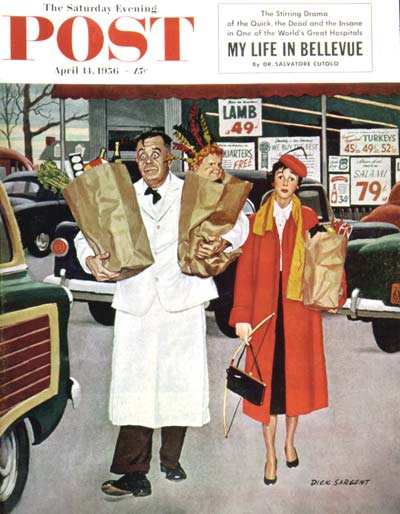
Richard Sargent
April 14, 1956
I don’t know why, but at first I didn’t even realize that the kid in this Richard Sargent cover is actually inside the bag. I think I was trying to figure what the “Quarters” sign behind them is referring to. Free quarters?
Strange Burgers
I know that the warm weather will eventually arrive, and when it does, it means that cookout season has begun. I could link to some traditional recipes, but where’s the fun in that? I assume you already know how to cook a cheeseburger. How about something a little … weirder?
You’ve probably always wanted to try a burger with a tarantula on top of it. I couldn’t find a recipe for it, but you can go to Bull City Burger and Brewery in Durham, North Carolina, and get one for $30. That sounds like a lot, but I really don’t know what the going rate for a tarantula burger is. If that’s a little too exotic for you, how about these Cream Cheese Stuffed Garlic Burgers or this Lasagna Burger from Dude Foods?
Maybe the tarantula burger would be better with some Mayochup on it. Lots and lots of Mayochup.
Next Week’s Holidays and Events
Administrative Professionals’ Day (April 25)
This is what we used to call Secretaries’ Day, and it’s not the only national day whose name has changed.
Take Our Daughters and Sons To Work Day (April 26)
This used to be called Take Your Daughter To Work Day until they expanded it to include boys in 2003.
North Country Girl: Chapter 48 — The Accidental Model
For more about Gay Haubner’s life in the North Country, read the other chapters in her serialized memoir.
James and I were on our way back to Mexico, driving his El Dorado from Chicago to Acapulco, probably the only time a Cadillac has been used as economy transport. After escaping from the police in Dallas, it was a relief to finally see the signs telling us the Mexican border was near — no more Texas! At the border crossing we were greeted with no more than the usual stares at the sight of a forty-three-year-old man and a twenty-one-year-old blonde in a new El Dorado covered in a layer of Texas dust; border patrol officials on both sides spent more time looking at us than at our passports.

As soon as we crossed the border, James, who had driven though most of Texas, pulled to the side of the road, slumped over, and mumbled that he had to get some sleep. We switched seats, I took over the wheel, and I drove into bedlam. Gone were the smooth, well-maintained US highways. I had to swerve into the other lane or the shoulder to avoid potholes that would have swallowed up the Caddy. There were also: long stretches of road that no one had gotten around to paving, men on horseback, kids leading burros, cows, pick up trucks carrying gigantic, loosely tethered cargo, buses with people riding on the top, flatbed trucks with 60-foot logs rattling away, more cows, dead dogs covered with frightening black clouds of vultures, and barefoot vendors with peeled oranges, bags of soft drinks, tamales, back scratchers, and loose cigarettes, all standing way too close to oncoming traffic, and sometimes even in the middle of the road. All of these nightmares were shrouded in a smog of exhaust and dust particles that hovered a constant three feet off the ground.
I had a death clutch on the steering wheel, but managed to pry my right hand loose, reach over, and switch off Linda Ronstadt. Music was too much of a distraction, and how many times had I heard “Blue Bayou” on this trip already? It was just as hard to tear my eyes from the hellish road; when it finally seemed safe, a quick glance showed me a James dead to the world, snoring slightly, mouth dangling open, looking quite a bit older than forty-three. My eyes and hands and mind fixed to the task at hand.
I drove for hours, deep into the Sonoran desert, where the traffic and the villages thinned out and I realized I had been clenching my jaw and my sphincter way too tight. The sun was setting to my right, a golden yolk dropping behind distant hills, setting the desert on fire. For a few minutes, everything was lit like a J.M. Turner painting, only a lot more arid. But here was night, drawing across the sky like a dark blue blanket, and then everything went black. I turned on the headlights and quickly switched to high beams, which flickered weakly through the still settling dust.

I noticed that the El Dorado seemed to be the only car going in either direction that had a working pair of headlights. Most drivers felt that the light of the moon was all the illumination they needed, while some cars had a single, dim headlight; I had to guess if it was the right or left one. It was like an awful game of chicken in some black and white teen movie. I crept along as far to the right of the road as possible, hoping no one was out for a stroll along the highway at seven at night, till I saw the flickering of a Vacantes motel sign. I didn’t care about cleanliness, price, nothing. I wanted out of the car.
After a night spent in an iron bedstead and a breakfast of tortillas and beans washed down with Nescafé, I said to James, “I am never driving in Mexico, day or night, again.” James teased me as a coward, and did the day’s drive, which was uncannily identical to the one the day before, with as much aplomb as if he had been toodling down Chicago’s Lakeside Drive. But that evening, when James got to experience the odd penchant Mexicans have for driving through the pitch dark countryside with their headlights off, he surprised me by pulling into a motel after only eleven hours behind the wheel.
By late afternoon of our third day in Mexico, we were winding up the mountains behind Acapulco, chasing the last rays of sun vanishing off in the west. We crested the top, and there, slipping in and out of sight as we made the hairpin turns downward, was Acapulco Bay, just visible as a silvery gleam separate from the velvet sky, where a thousand lights sparkled. James sighed, smiled, and reached over to take my hand. We were back.

It only took a few hours for James to find a place for us. Our home for the next few months was not oceanfront; it was even farther up the hill than the apartment I had shared with the three French Canadian girls. The building looked like a motel. Three blocky two-bedroom units shared a single umbrella table, four lounge chairs, and a shallow little pool that did have an eye-popping view of Acapulco. The other two units stood strangely empty the entire time we lived there. Our rent included daily maid service. A tiny, silent woman came in every morning, made us coffee, cleaned the apartment, took away our dirty laundry, and always asked if we would like lunch. James couldn’t or wouldn’t think ahead to meals, but once she left us a plate of chicken sandwiches that was one of the most delicious things I have ever eaten.
James and I fell back into last winter’s languid pleasure-seeking days, with only a few modifications. His budget did not allow for a season’s membership at a private beach club or for daily water-skiing. James shrugged off these deprivations without losing too much of his self-esteem. “Next year,” he told me.
When I had first met James he could go days without checking his portfolio, confident that his stock picking acumen meant that there was nowhere to go but up. Now every morning we drove down to the Sheraton’s newsstand, where James bought yesterday’s New York Times, lit a cigarette, and nervously tore through the papers to the stock market quotes.

James’s mood depended on that day-old news. If his stocks were down, he was furious with frustration: he had no way of contacting his broker other than waiting in line for hours at the sweltering office of the inept Mexican telephone company to make a long distance call. On those bad days I could look forward to hours of James taking on all comers at backgammon at the Villa Vera. He believed he could recoup some of his stock market losses by gambling, and he was desperate to prove to himself that he was a winner. He did win a lot, having the sharpie’s eye for novice players who were easily scalped, or blowhards who James taunted into making stupid moves and accepting hopeless doubles. His obsession left no time for meals. I spent those days at the Villa Vera swim-up bar, trying to fill up on bullshots (vodka and beef consommé), and wondering what our Mexican maid would have served for lunch.
The blessed days his stock posted a bit higher, the old preening, confident James reappeared. On one of those mornings James looked up from the business section with his vulpine grin and said, “Let’s have breakfast.” He took the paper and me to one of the Sheraton’s palm-shaded beachside tables, where I devoured a cheese omelet and everything in the bread basket, just in case. James was scribbling on the stock quotes and I was licking the last delicious buttery crumbs off my fingers, when a good-looking man, American by haircut, demeanor, and madras shorts, walked up to the table and introduced himself.
He was the director of a commercial promoting Mexican tourism and the model they were supposed to be filming that day hadn’t shown up. The director asked me, “Would you like to be in the commercial? I can pay you a hundred dollars. All you have to do is run back and forth on the beach for an hour.”
James piped up, “Yes, she’d love to!” while I felt a sharp pang of regret about the four buttered rolls I had just eaten. I was wearing nothing but my cute bronze bikini, a shade darker than my skin, held together in strategic places by golden rings.
I followed the director down to where the waves frothed on the shore. It was the perfect Acapulco day, so gloriously sunny and balmy that it would inspire any snowbound Midwesterner to immediately start packing his bags.
The director pointed up and down the beach, in case I didn’t know where it was, said “Okay, start running,” and then yelled something at the cameraman. I ran, hopped, skipped, splashed, smiled, waved, and jumped around like an idiot, followed by the cameraman and the director, who kept yelling “Happier! Look happier!”
James stayed back at the Sheraton, stretched out on a lounge chair, admiring his handiwork each time I ran by. When it was over the director handed me a hundred dollar bill and promised to send me a copy of the commercial. At least I got the money. I saw the commercial once on TV, and only recognized it because my first thought was, “Hey, I have that same bikini.”

My sudden and accidental elevation into a professional model was a bigger boost to James’ ego then it was to mine. At the Villa Vera, he called me up from my swim-up bar stool to introduce me to yet another backgammon pigeon, saying, “This is my girlfriend, she’s a model.” James beamed as if he had sculpted me himself, a wolfish Pygmalion, and stroked my butt for good luck. Look, he was signaling his opponent, look at me, lucky and successful, a winner with a sexy young girlfriend. And now I’m going to beat the pants off you. Most of the time, he did. I was rewarded for my supporting role with thin gold chains for my wrist and neck, bijoux de plage, the sales lady said, simple and elegant. I still thought the uncut emeralds would look just fine on the beach.
For a few weeks, as his stocks kept ticking upwards, James gleefully slaughtered all comers at backgammon, and we were back in the Acapulco groove, as if no time or money had been lost, back to waterskiing in the morning, afternoons at Le Club (our entry into this private, posh oasis bought by James with a folded bill discretely palmed to the maitre d’), Carlos ’N Charlie’s for drinks and dinner if James was eating that evening, then always, always dancing at Armando’s.
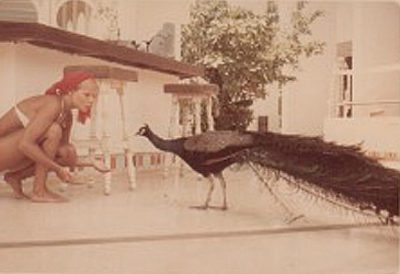
It was the last good time.
One morning, James opened the New York Times to the stock pages and a black cloud covered his face and mood. This cloud did not blow away, but grew heavier and more ominous each day. There was nothing I could say, nothing I could do, except that hope tomorrow’s news would be better. It wasn’t, and neither was the next day’s. There was nothing James could do either, except watch his fortune evaporate. There was no more waterskiing, no more afternoons watching the peacocks strut around Le Club’s enormous pool. James got up in the morning, threw back his coffee, and headed straight for the Villa Vera. In their shadowy backgammon room James challenged his opponents to higher and higher stakes and became aggressively reckless with the doubling cue. It didn’t matter if he was winning or losing, I couldn’t bear to watch. I was grateful whenever James forgot to call for his lucky charm before facing a new opponent.
It didn’t seem possible, but meals became even more irregular. I looked in the mirror: I was model-skinny. James went from thin to cadaverous. Even though the sun shone every day, we carried our own bad weather with us. The fun, the glamour, were gone. We didn’t dance any more; James showed up nightly at Armando’s because that was what a happening guy in Acapulco did. He watched the happy couples on the dance floor and threw back vodka and sodas. I held my hands over my flip-flopping empty stomach and tried to figure out what would happen next.
It did not surprise me when James turned outlaw. There was always something felonious about him, a suspicion that there was a crime in his past or in his future.
Enough of winter had passed that it was safe for James to go back to Chicago without loss of face. He began planning our drive north, a plan that now included drug smuggling.
News of the Week: Phones Take Over, Satellites Are Falling, and Weird Al Did Something Cheesy
Brain Drain
I know I’ve talked about smartphones before, how everyone is addicted to them and how they’ve changed everything (mostly for the worse), but indulge me a few more words on the subject. (If you’re already bored, you can scroll down the page a bit and read about Jake Tapper’s new novel and Marilyn Monroe’s new movie.)
To put it simply, being connected all the time isn’t a good thing. Sure, smartphones are great in emergencies, but there’s no mental breathing room anymore. Before smartphones, we would put down our phones and mail, shut off our TVs, stereos, and the internet, and leave the house. Now we carry those things around with us 24/7. We’re always “on,” and it has changed the way we associate with each other and with tech, and has even affected the way that we think. It can’t be good to have this much information coming at us all the time. That’s why I’m in favor of dumb phones — phones that are actually phones and not also connected to the web — instead of smart ones. I’d also suggest signing up for a cheap phone plan if you don’t have to be connected to the web all the time and just want to make and receive calls. And don’t ever give up your landline!
CBS Sunday Morning’s Ted Koppel had a piece on information overload this week, detailing how smartphones, the web, and social media have taken charge of our lives. He even interviewed the guy who invented the Facebook “like”:
On a related note, Tuesday marked the 45th anniversary of the first cellphone call.
Down to Earth
In January, I told you about a Chinese satellite that was going to crash back to Earth. This week, that satellite did indeed come back, and luckily no one was hit by it, though you’d have had better luck hitting the Powerball.
Most of the Tiangong-1 satellite burned up during reentry, and what was left seems to have fallen into the Pacific Ocean. Those of you who had “2500 miles south of Hawaii” in your office pool are the big winners.
2001 at 50
Speaking of things in space: This little admission may destroy any pop culture cred I have and may even get me barred from several theaters, but I’m not a fan of Stanley Kubrick’s 2001: A Space Odyssey. It’s true that I’ve only seen it once, many years ago, but I remember being profoundly disappointed in it, even if I appreciate its influence. Maybe I’ll watch it again to celebrate the film’s 50th anniversary and see if I agree that the film is not only fascinating, but one of the best movies of all time.
New Books
In addition to the new books you’ll find in the current issue of the Post, here are four more that will be released soon.
Look Alive Out There: Essays by Sloane Crosley. Crosley first broke through with her fun essay collection I Was Told There’d Be Cake, and this new one is getting great reviews too. (Out now)
The Hellfire Club by Jake Tapper. The CNN anchor’s first novel is a political thriller set in 1950s Washington, D.C. Here’s an excerpt. (April 24)
The Ideal of Culture: Essays by Joseph Epstein. Epstein is one of our great essayists, and his new collection explores such topics as parenthood, cowardice, grammar, the 1960s, F. Scott Fitzgerald, and reaching the age of 80. (May 7)
Ten Arguments for Deleting Your Social Media Accounts Right Now by Jaron Lanier. As you can read above, this is a subject that’s near and dear to me, so I can’t wait to read what the tech/virtual reality visionary has to say about Facebook and Twitter. (May 29)
Digital Marilyn
It’s obvious that Marilyn Monroe will never really die. Not only does she still make a lot of money decades after her death, but now she’s coming back to the movies.
Actress Suzie Kennedy will portray Monroe in a new film about the actress’s life. She already looks a lot like Monroe, but she’s going to have help from digital technology. A team of tech whizzes took 3,000 photos of Kennedy’s face and body to create an “avatar” of Monroe that will be featured in the film.
This could be an incredible advance in filmmaking. At some point you know we’re going to see new movies and TV shows starring Abbott and Costello, Cary Grant, and Humphrey Bogart. We’ve already seen commercials that use the technology, and digital trickery is used online all the time. But I bet one day we’re going to have entire movies based on the technology, and stars will never stop working. It’s one of those tech developments where you say, “Wow, this is so cool!” and then a few minutes later you say, “My God, where is this leading?”
Congrats
I’d like to take a moment here to say a few words about a couple of milestones at the Post. The first is the magazine itself, which was honored by the Pop Culture Association this week at their 48th conference. They describe us as “an American institution” with a “unique cultural legacy,” and I have to say I agree with that.
And happy anniversary to Executive Editor Patrick Perry, who celebrates 40 years at the magazine!
RIP Steven Bochco, Winnie Mandela, Rusty Staub, Anita Shreve, and Deborah Carrington
Steven Bochco was the legendary TV producer and writer responsible for such shows as Hill Street Blues, L.A. Law, NYPD Blue, Murder One, and Doogie Howser, M.D. He also wrote the iconic sci-fi movie Silent Running and several classic episodes of Columbo. He died Sunday at the age of 74.
Several friends and stars offered their condolences and memories of Bochco in The Hollywood Reporter, including Sharon Lawrence, Jill Eikenberry, and Mike Post.
Winnie Madikizela-Mandela was an anti-apartheid activist and the ex-wife of Nelson Mandela. She died Monday at the age of 81.
Daniel “Rusty” Staub helped the New York Mets win the National League pennant in 1973. He also played for the Detroit Tigers, Texas Rangers, Houston Astros, and Montreal Expos. Staub died last Thursday at the age of 73.
Anita Shreve was a beloved author of such novels as The Pilot’s Wife, The Weight of Water, and Sea Glass. She died last Thursday at the age of 71.
Debbie Lee Carrington was an actress and stuntwoman best known for her appearance in the Arnold Schwarzenegger film Total Recall and her role as the woman Mickey wants to date on Seinfeld. She also appeared on The Drew Carey Show. As a little person, she often doubled for children in movies, including Titanic and Child’s Play. She died in March at the age of 58.
Best and Worst of the Week
Best: Weird Al Yankovic, along with veteran crossword-maker Eric Berlin, took over The New York Times crossword puzzle on Wednesday with a cheese-themed puzzle. An example of the kind of clues you’ll find? 20-across is “Cheesy 1992 military drama.” The answer is A Few Gouda Men.
You have to subscribe to do the puzzle, but you can see what it looks like in this PDF.
Worst: I’ve been meaning to catch up on Instinct, the new police drama starring Alan Cumming. Looks a little routine — an unpredictable genius teams up with a by-the-book detective to solve crimes, how novel — but Cumming is always good, and it looks like fun. But this week’s episode, about an Amish boy who is murdered after he leaves home and moves to New York City, felt familiar to a lot fans. A little bit too familiar. Turns out the plot and scenes mirror a 2009 episode of another buddy-detective show, Bones, right down to some of the clues.
This Week in History
First Issue of TV Guide (April 3, 1953)
Who was on the cover of the first issue? It was a baby. Specifically, the newborn son of Lucille Ball and Desi Arnaz, Desi Arnaz Jr. Ball actually arranged ahead of time to have a caesarean section so the birth would coincide with the airing of the I Love Lucy episode where Ball’s character Lucy Ricardo gave birth as well.
Dr. Martin Luther King Jr. Assassinated (April 4, 1968)
Wednesday marked the 50th anniversary of the death of the civil rights leader. King wrote a piece for the Post in 1964 titled “Negroes Are Not Moving Too Fast,” and here’s an interview NBC’s Sander Vanocur did with King 11 months before his assassination:
This Week in The Country Gentleman History: Cousin Reginald is the Hero (April 6, 1918)
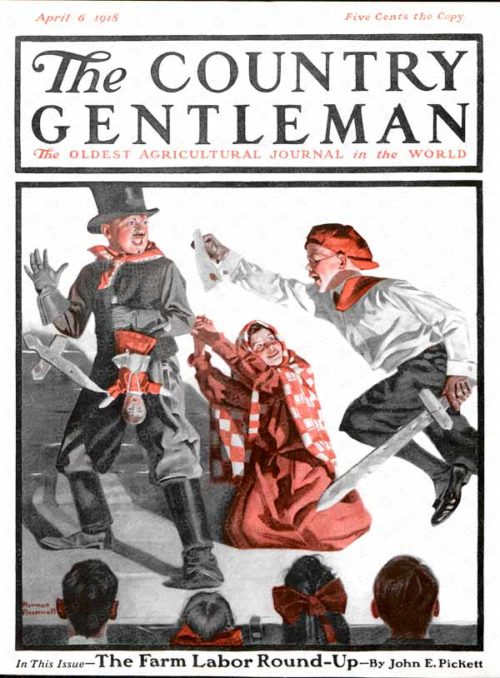
Norman Rockwell
April 6, 1918.
The Country Gentleman, a sister publication of the Post, was published from 1831 to 1955. Norman Rockwell painted several covers for it, including this one. When I first saw it, I couldn’t quite figure out what it was all about. I thought it might be titled “Crazed Fan Disrupts Performance of A Christmas Carol.” The cover is actually part of a series of paintings that Rockwell did for the magazine focusing on a group of boys and their cousin Reginald. That’s Reginald with the sword.
April Is National Grilled Cheese Month
I’m pretty much a traditionalist when it comes to grilled cheese — I prefer cheddar or American cheese on white bread — but there are so many other options if you want to try something a little different for National Grilled Cheese Month.
Here’s a recipe that Bon Appétit calls the “Best-Ever Grilled Cheese,” though it has mayonnaise, so I don’t know if it deserves that title. Here’s one called a Nacho Grilled Cheese, made with jalapeños and Doritos. This one from Genius Kitchen is made with green olives. And if you’re going to have grilled cheese, you can’t forget this.
Maybe you can do Weird Al’s cheese puzzle while eating grilled cheese, if that’s not too much cheese for you all at once.
Next Week’s Holidays and Events
Winston Churchill Day (April 9)
This day is mostly celebrated in the United States, marking the occasion in 1963 when President Kennedy named the British Prime Minister an honorary U.S. citizen. Here’s a 1939 Post piece about Churchill titled “Old Man in a Hurry,” and here’s our interview with John Lithgow, who plays Churchill in the Netflix series The Crown.
National Siblings Day (April 10)
I know, I know, sometimes you argue with your brothers and sisters (I’m the youngest of seven), but maybe today you can put that all aside. You can always argue tomorrow.
North Country Girl: Chapter 43 — Sweet Home, Minnesota
For more about Gay Haubner’s life in the North Country, read the other chapters in her serialized memoir.
There was something about me that triggered a Svengali-like impulse in my older lover James, who had swept me off my feet and into his Acapulco beachfront condo. James loved playing the worldly sophisticate and I was a young sponge, eager to soak up every detail of the kind of life that a year ago I had no idea even existed.
While I did learn to drop that water ski, I never picked up any of the disco dance steps James excelled at (“Do the Hustle!”). James did get me to give up the arm flailing for smooth lifts and shrugs of my shoulders, movements that were occasionally in time with the music. He taught me the complicated economics of tipping: who, when, and how much; we lived in bars, clubs, and restaurants where we never had to wait for a table and drinks appeared and were replaced as if by magic.
After one raised eyebrow from James I stopped ordering White Russians before dinner, and even after. James instructed me to slowly sip the Remy Martin he always finished with, and it was fun sticking my whole face in those enormous snifters. When we dined out, James asked me what I would like to eat and then ordered it for me while I smiled and blinked at the waiter like a deaf mute. James taught me how to do the New York Times crossword puzzle and to play backgammon, and I quickly became better at both of these than he was, though neither of us would admit it. I was always a penny ante gambler: if I lost five dollars at backgammon I felt a pang in my stomach; that five dollars could have bought an economy-size box of the frozen fish sticks I survived on a year ago.

James believed that it was gauche to wear anything less than 18 karat gold; his own heavy chain was 22 karat. One afternoon, he led me into a chic boutique across from his condo, where he ordered a custom-made piece of jewelry, not another chain for himself but a necklace for me. That year, all the girls in Acapulco wore gold pendants spelling out their names. James got off cheap buying only three letters, and in that time and place I could wear GAY around my neck without too many double takes and annoying comments.
To my pleasure and amazement, I had a man buying me jewelry in an elegant store, even if I did end up with the least expensive piece possible. While James was consulting with the saleswoman on the right font and chain for my necklace, I was eyeballing the display of uncut emerald rings and hoping one of them might be in my future. A ring with even the smallest uncut emerald would still make me inordinately happy.
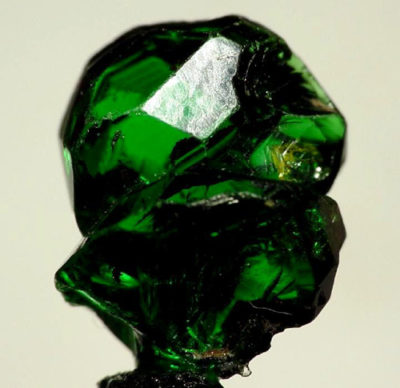
It was a wonderful dream I never wanted to wake up from, but my time in Mexico with James was coming to an end. May is the start of the rainy season in Acapulco, the end of the party season. The lease was up on the apartment and the rented jeep; James was headed back to Chicago. The French Canadian girls had vanished; I hope they all landed wealthy fiancés. The crowds had thinned out at Armando’s and Carlos’N Charlies. Even Fito was leaving, Jorge told me, for a gig in Mexico City.
I checked my bankroll of Pracna one dollar bills; it was almost the same size as it had been when I stepped off the plane. When I was with James, I never had to carry anything in my purse besides lipstick and a comb. I had more than enough to fly back to Minneapolis and keep me going till I figured out what was going to happen next.
James and I had our last dinner at Carlos‘N Charlie’s, our last dance at Armando’s, and did our “Wow, it’s been great” farewells. Then to my surprise, James asked for my phone number. My number? I had no idea of where I would be living; I could have given him my mother’s phone, but my gut said no. James scribbled his number on a piece of paper, told me to call him, and we kissed, a kiss that did not feel like goodbye.
I had no idea what I was going to do back in Minneapolis. I was counting on Pracna to hire me back; no one had been mad that I left with literally no notice, and with the return of summer I knew the place would be swamped with customers. But where could I live?
Even if she had kept our crappy apartment, I could not ask Liz to take me back; I had proved to be the most unreliable of roommates. Mindy and Patti shared a tiny studio that was barely big enough for the two of them. Eduardo had that big apartment, but it would have been weird to ask to stay there whether he was back with Patti or not. And for all I knew, Eduardo might have finally received his academic walking papers and be off at another, more lenient, college, or he could be back home in Miami, being force fed mondongo.
I got off the plane in Minneapolis, went to a pay phone, and stayed there pumping the same quarter in again and again until my old boyfriend Steve finally answered his phone. By a miracle, I had caught him on his last day in the Middlebrook dorm. He gave me the address of his new place and said he would meet me there.
Once again I stood outside a guy’s apartment with my pink Samsonite suitcases, waiting to move in uninvited. Unlike Jorge, Steve was happy to see me. Very happy, in fact. It had been almost a year since the last time we were together, an intense bout of sex in his dorm bed followed immediately by an epic fight when I found a pair of panties, not mine, in the sheets.
Now I was very thin (thanks to James), very tan, and very blonde. I tried to radiate a new sophistication, hoping that my recent Mexican adventures had made me more exotic and desirable than the nerdy brunette from Duluth Steve had met our freshman year. That girl was dead.
Steve looked exactly the same, small-town boy gone to the dark side, his smile still more of a sneer, costumed as the Caucasian Super Fly in a cheap white polyester suit. I couldn’t help but think that in that outfit, he would have been left standing in line all night outside Armando’s. But when we touched, that familiar and thrilling bolt of desire shot through me, making me catch my breath and hold him tighter. The two of us hustled up the stairs and into his new place.
It had taken years, but Steve had finally convinced Outward Bound to let move him out of the dorm and into an apartment of his own, an apartment they still paid the rent on. His new place was the top floor of recently built duplex not far from the university campus. A sign in front announced “Buttercup Complex Now Renting” or some such nonsense, but Steve’s building was the only one on the block: vacant lots surrounded the duplex on all sides, portioned out with stakes and string. The closest building was behind the duplex and across a field, a single story red brick creamery topped with a huge billboard featuring the Land O’Lakes Indian maid with her butter, her mysterious smile, and her plump knees sticking out of her buckskin garb.
Steve was upholding part of his deal with Outward Bound, puttering away nicely towards his degree in Accounting or Business or Pharmaceutical Sales. But he kept his eye on the prize and wanted to expand his drug dealing beyond his fellow dorm residents. He knew the quickest way to get busted and lose his scholarship would be to start buzzing in shady characters to his dorm room at all hours; drug dealing is the business that never sleeps. If he had his own apartment, he could expand his customer base and make even more money. Every few days he would drop into the dorm “to visit friends,” friends who in an emergency could come to him. He probably had a complete business plan, repurposed from some economics assignment, in place.
I can’t imagine that Steve’s benefactor from Outward Bound ever came to check up on him in his new digs, as there was always a wide sampling of drugs strewn across the coffee table, like a display case at a jewelry store. Most of his stash was tucked away in the freezer, while the cash was cleverly concealed in a Folgers coffee can on top of the bedroom TV. A steady stream of customers came by all day and pretty far into the night, as late as possible in a town where the bars shut at one. Sometimes they called first, sometimes they just showed up and banged on the door.
My original plan, concocted on the flight to Minneapolis, had been to hole up in Steve’s dorm for a few days till I found a place to live; but Steve welcomed me to stay as long as I liked in his apartment and his full-size bed, and I was happy to be there, happy to sit on his tiny back patio, smoking his pot with no one around except the Land O’Lakes maiden.
I did sneak in a quick phone call to James in Chicago. We talked about the weather and if I had signed up for summer classes yet. When conversation faltered I gave him Steve’s number to reach me without mentioning Steve himself.
I also phoned my mother to let her know I was alive. The only way to make a long-distance phone call in Acapulco was to go to the phone company, which was a shabby, un-air-conditioned edifice in the hot, steamy downtown. I did try to call my mom; I filled out the blurry form at the desk, and then stood in a long line waiting to enter a wooden phone booth, where I waited some more for the right number to be connected, which generally took two or three tries. I stood in that hot box, sweating and hoping someone would be at home to answer the damn phone. After my second fruitless attempt to reach my mother, the long-suffering look on James’ face as he sat smoking in the jeep discouraged me from trying again.
When I phoned her from Steve’s place, my mother was not as concerned about my going missing for six weeks as I thought she should be. She had a bigger problem. My sister Lani had appealed to have her custody switched to my father, and the minute that happened, dad gave Lani permission to marry her Colorado Springs boyfriend. The boyfriend was twenty-one, Lani was sixteen and about to be a June bride. Neither mom nor I were invited to the wedding. For some reason the fact that Lani had picked out a big virginal white wedding gown to get married in was what drove my mom over the edge. I knew she wasn’t listening to me, but I assured my mother I was fine, and hung up to the sound of her tearing out her hair.
As I had hoped, Pracna was happy to hire me back. They had opened the outdoor cocktail area overlooking the Mississippi River. People showed up at eleven in the morning to snag one of those tables, and every table outside and in was occupied till we closed the joint at one. I sweet-talked Steve into driving me to and from work, promising to introduce him to potential new customers, the hard-partying Pracna staff. I treated myself to a new pair of work shoes, lovingly tucked my growing bankroll into the empty shoebox, and slid the box way under Steve’s bed, till it rested back against the wall.
The deadline for enrolling in summer classes came and went. I was not ready to get back on the treadmill. I had always been an industrious ant; now I discovered that grasshoppers and blondes do have more fun. It was too pleasant waking up next to Steve, who was already rolling that morning’s first joint, and not having to go anywhere for hours. We were getting along better than we ever had before. Steve seemed mesmerized by the new me, and his outlaw life excited me enough to overlook his pimp-style wardrobe. Steve had grown up poor, his few articles of clothing were hand-me downs or from Goodwill, and children are cruel. He made up for that childhood deprivation now, with a closet full of candy colored wide brimmed hats, bell bottoms in every fabric except denim, shiny patterned shirts, and platform shoes of a tottering height that I would have plunged from, but that he managed to strut around in with aplomb.
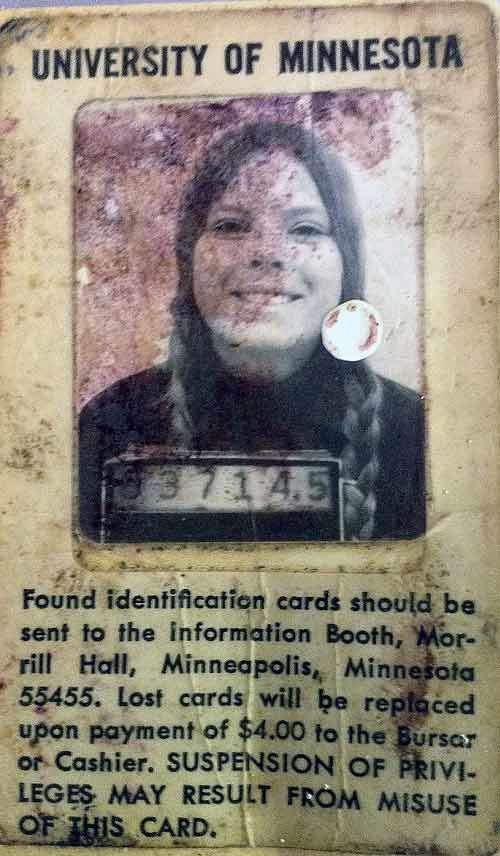
Our only disagreements came from the fact that Steve did not want to leave the apartment. For a guy whose entire life was bankrolled by an outdoors education organization, Steve was reluctant to go outside. There were no cell phones, no beepers, not even answering machines, and he did not want to miss a single prospective buyer. But it was glorious summer in Minnesota, when the air is a balmy blessing and the grass a soft carpet. I was drifting along, with no thought for the future, but well aware that there were only a handful of summer days to enjoy. I wanted to be outside, coaxing what warmth there was to be had from the Minnesota sun on my still tan skin.

I would pout and fuss until I got Steve to drive us and a blanket and a bottle of something to Lake Calhoun (now Lake Bde Maka Ska) where we would snog publicly and smoke pot and drink surreptitiously, although in those days no one cared as long as we didn’t make a mess or too much noise. Sometimes I would get him out of his platform shoes and into a his old pair of hiking boots and we’d walk the trail to Minnehaha Falls, a bit of wilderness in Minneapolis that we often had all to ourselves. I even talked Steve into driving to the Corn on the Curb Festival, held in Le Sueur, home of the Jolly Green Giant, on the exact day when the corn stalks were as high as an elephant’s eye and the emerald fields waved gently under a summer sky bleached almost white. Steve claimed to hate small Minnesotan towns. But he took me anyway, after swallowing a few pills, and as his reward he got to see me eat twenty ears of corn while he pounded bottle after bottle of Schell beer and sneered at the yokels.
News of the Week: More Snow, Cloned Dogs, and the Wild, Exciting World of Celery
Winter’s Not Done Yet
I just looked out my window and it’s a wet, gray, early March day. I didn’t mean for that to rhyme; I just wanted to describe what it looks like outside my window.
I’m actually now in “spring mode,” ready to wear lighter clothing and put the shovels away, but winter isn’t finished with us quite yet. We just had a nor’easter that gave us a ton of rain and winds and damage to coastal homes, and tonight and tomorrow we’re supposed to get hit with another storm. This time more snow will be involved, anywhere between 1 and 12 inches, depending on where you live.
This is what I find funny about weather forecasts now: they have so much information that, in a way, they’re less accurate. A typical snowstorm forecast will go something like this:
“The European computer model says we’re going to get hammered by this storm, with over a foot of snow. The American model says we’re going to get only an inch or two. Then this third model says that we’re going to be somewhere in the middle, maybe four to six inches. We’re still collecting data, but that’s our best guess right now. Back to you, Ed.”
That’s a great forecast. I could have told you the same thing sitting on my couch in my sweatpants. But they used the word computer and showed a lot of Doppler radar images, so I guess we better pay attention to it.
People … People Who Need Cloned Dogs
I love dogs more than I love some people I know, but I’m not sure I could ever do this. Barbra Streisand cloned her dog. She wrote about it for The New York Times.
Streisand had her dog Samantha for 14 years, and just before the dog died, the vet scraped the inside of her cheek to get her DNA. The singer has a friend who did the same thing with his dog, and she wanted to try it to see if it would work. And it certainly did. It produced five puppies, three of which she kept and two she gave away.
It’s a little too sci-fi for me. I have this vision of an army of cloned little dogs taking over the planet. But I’m happy that Streisand is happy.
By the way, for the title of this section, I almost went with “Send in the Clones.”
Chiweenie
Every year I like to point out new words that are added to the various print and online dictionaries, even if sometimes they aren’t words at all. The Merriam-Webster Dictionary is my favorite. I just bought a brand new one because my old one vanished somehow, and it’s perfect timing, because this past week they announced some words that were added to the classic tome. And when I say “some” words, I mean 850.
Some of the new words and phrases include wordie (a lover of words), chiweenie (a cross between a Chihuahua and a dachshund, even if they’re not cloned), hate-watch (where you watch a movie or TV show even though you know it’s bad), and dumpster fire (which is defined as “a disastrous event,” though I’ve seen it used to mean a series of disastrous events, or just an overall definition of how things are going).
They’re also now including mansplain, but to be honest, I’m a little afraid to tell you what that is.
Mister Rogers’ Neighborhood at 50
To celebrate the 50th anniversary of Mister Rogers’ Neighborhood, PBS is airing a special this week titled It’s You I Like. It focuses on what Fred Rogers and the show meant to various people, including John Lithgow, Whoopi Goldberg, and Yo-Yo Ma. It’s hosted by Michael Keaton, who got his start in pictures as a crew member on the show. Here’s a preview:
The Razzies
Everyone knew who was going to win the Best This and That at the Oscars this year — the results were fairly predictable — but who won the awards for the Worst of the Year? The Golden Raspberry Awards, or Razzies, are held the day before the Oscars every year, and this year’s list of “winners” includes Tom Cruise for Worst Actor (The Mummy) and Tyler Perry for Worst Actress (Boo 2! A Madea Halloween), and The Emoji Movie was named The Worst Movie of the Year. Other people who won Razzies include Mel Gibson and Kim Basinger.
Oddly, the winners didn’t show up to accept their awards.
RIP Roger Bannister and David Ogden Stiers
Roger Bannister was the first person to break the four-minute mile, which he did on May 6, 1954. He later had a career as a neurologist. He died Saturday at the age of 88.
David Ogden Stiers was an actor best known for his role as Major Charles Emerson Winchester on M*A*S*H and for voice work in many animated films. He died Saturday at the age of 75.
Quote of the Week
“Now there are so many young people, and all my old friends are dead. They have either drunk themselves to death or they have naturally popped off the vine.”
—actor Christopher Plummer, on how the Oscars have changed
The Best and the Worst
Best: I’m cheating a little because this isn’t from this week, but I didn’t see it until this week, so it still counts, right? It’s a letter that New Yorker writer Alexander Woollcott sent to Ira Gershwin, and is now posted at Argosy Books in New York City. My favorite part is where he manages to tell Gershwin that he hopes he fries in hell, but still signs it “affectionately.”
Letter from Alexander Woollcott to Ira Gershwin, on display outside the Argosy Bookstore, New York. pic.twitter.com/wmtC2LGeP9
— southpaw (@nycsouthpaw) February 20, 2018
Worst: Just one last thing about the Oscars. Every year they have an “In Memoriam” segment, aka the “What People Are They Going to Leave Out This Year?” segment. Sure, it’s hard to pare down hundreds of people into a few dozen, but they’re making a decision about who to include and who not to include. This year they left out John Mahoney, Tobe Hooper, Powers Boothe, Dorothy Malone (who actually won an Oscar!), Adam West, John Gavin, Dina Merrill, Michael Parks, Jean Porter, Richard Anderson, Anne Jeffreys, and Michael Nyqvist, among many others — but they included people like a hairstylist and a public relations guy. I’m sure they were lovely people, but don’t tell me you don’t have time to include Rose Marie, a woman who was in the movies and television for 90 years, if you are going to include people movie fans have never heard of before.
This Week in History
Alexander Graham Bell Born (March 3, 1847)
The man who invented the telephone in 1876 would often greet people with a “Whoo-hoo!” when talking to them on the phone. Today, he’d probably just text an emoji. Here’s a Post piece from 1900 on how to use the telephone, and here’s Ron Carlson’s essay on why he wants the landline to stick around forever.
Barbie Introduced (March 9, 1959)
Next year will mark the 60th anniversary of everyone’s favorite doll. This month, Mattel is releasing new dolls to honor Amelia Earhart, Frida Kahlo, and other inspiring women.
This Week in Saturday Evening Post History: Freedom from Want (March 6, 1943)
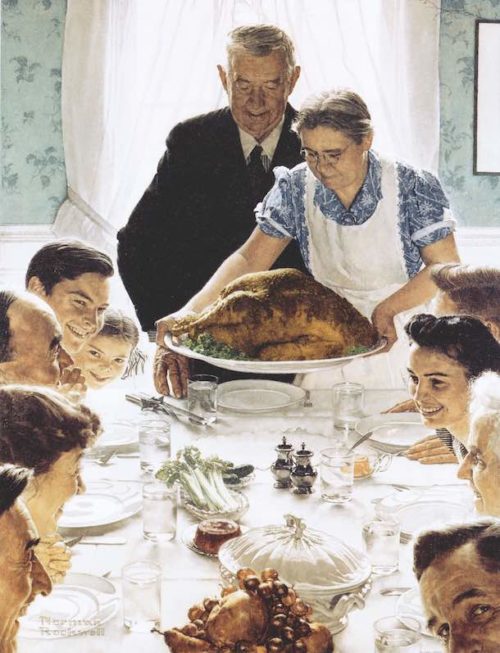
The Post asked four writers to craft essays to accompany Norman Rockwell’s Four Freedoms paintings. Poet Carlos Bulosan contributed the essay for Freedom from Want.
The painting has to be one of the most parodied in history, with everyone from The Simpsons, superheroes, and the cast of Modern Family replacing the original family.
March Is National Celery Month
I think we can all agree there isn’t a more exciting food than celery! It’s light green! It’s mostly water! It doesn’t have a lot of flavor! Did I mention it’s mostly water?!
Okay, no matter how many exclamation points I use, I can’t get you pumped up for celery, but I happen to really love it (and not just with peanut butter spread on it). Here’s a recipe for Easy Homemade Chicken Salad from Genius Kitchen, which sounds good, though I think they might be overdoing it with the mustard, green peppers, and hard-boiled eggs. Here’s a simpler recipe from the same site.
I’ve noticed a lot of recipes include water chestnuts, but I wouldn’t go that route either. I do like white pepper in mine and maybe even some grapes. Yes, grapes.
Next Week’s Holidays and Events
Daylight Saving Time begins (March 11)
I hear there are people who like it when it stays light until 8 or 9 p.m. I’m not one of those people, but I know they exist. Set your clocks an hour ahead before you go to bed.
National Girl Scout Day (March 12)
How can you celebrate the day if you’re not a Girl Scout yourself? By purchasing some cookies, of course. I like the Samoas, which apparently are now called Caramel deLites.
News of the Week: Gross Toys, Confusing Tennis Balls, and the Original Twizzle
This Is Snot Your Father’s Toy Fair
Here’s a memory: Creepy Crawlers.
They were bugs you made in the oven. You put the goop into tray molds and then bake it. Voilà! Wiggly bugs to freak out your mom and older sisters. I thought of those while reading about this week’s New York Toy Fair and some of the new outlandish toys that made their debut.
Toys are now a lot more bodily-function-oriented than when you and I were kids. They’ve come a long way since Creepy Crawlers, Wacky Packages, and Whoopee Cushions. For example, there’s Sticky the Poo from Hog Wild, which is exactly what you think it is, and sticks to your walls and appliances. Hasbro has a game called Don’t Step In It, where blindfolded players have to avoid … actually, you can probably guess the object of the game, so I’m not going to finish that sentence.
Not to be outdone, KD Games has a new game called Snot It, where you put on what at first looks like an ordinary old-fashioned pair of glasses and nose, but actually has something hanging from the nose that you use to pick up game pieces. I’ve tried to explain that as delicately as I can, but you have to see it for yourself.
I hope kids still play Monopoly too.
What Color Is a Tennis Ball?
It’s yellow. Hey, we settled that quickly!
Or is it green? That’s the discussion people are having online as tennis season gets into full swing. A Twitter user put up a poll this week asking followers what color the ball is. 52 percent of respondents say it’s green, while 42 percent say yellow.
Yes, this is turning into another “Is the dress black and blue or white and gold?” debate.
Six percent of the respondents said the color was “other,” which makes me wonder what this “other” color could be.
And the Worst President Is…
Speaking of polls, the American Political Science Association released one this week in which 170 scholars were asked for their list of the best and worst U.S. presidents. The ones you imagine would be near the top are indeed at the top (Lincoln, Washington, both Roosevelts, Jefferson, Truman), and the bottom-dwellers are the ones you’d expect to see there too (Pierce, Harrison, and Buchanan). I think it’s rather unfair for Harrison to be listed as one of the worst. The poor guy died of pneumonia just a month after being sworn in (he refused to wear a jacket on the day of the inauguration because he wanted to look stoic), so maybe there should be an asterisk next to his name.
Our current president came in dead last, though if we’re to be fair, the others are being judged on full four- or eight-year terms, when Trump has only been in office for a little over a year.
But a lot of people have always chosen Andrew Johnson, who came in fifth from the bottom on the poll, as the worst of all time. CBS Sunday Morning correspondent Mo Rocca did a segment on Johnson and the town that is still proud of him.
The Book of the Month Club Is Still Around
Are books here to stay? Random House co-founder and What’s My Line? panelist Bennett Cerf wrote a piece for the Post back in 1958, when television was starting to rule our minds, answering that very question. Post Archive Director Jeff Nilsson asked the same question in 2013, and with the popularity of eBooks and various reading devices rising, it’s a question worth talking about. If my spending habits are any indication, books are never going to go away, and in fact, even if a book is digital and not print, it’s still a “book” (print vs. digital is a different debate).
But as someone who buys a lot of books, I was happy to come across the website for the Book of the Month Club this week. Honestly, I didn’t know they were still around. Looks like they’ve updated things for the age of the internet. The club is a great way to not only encourage reading, but also to find some books you might not find or select for yourself.
Let’s Twizzle!
“Twizzle” sounds like something Snoop Dogg would say, but it’s actually the name of an ice skating move currently being performed and talked about at the Winter Olympics in South Korea. But fans of The Dick Van Dyke Show know what the real dance move is (and I apologize in advance because this song is going to be in your head for the rest of the day):
RIP Billy Graham
The Reverend Billy Graham was known as “America’s pastor.” Besides preaching to millions of people around the world for several decades, he was a counselor to every U.S. president since Harry Truman. He died Wednesday at the age of 99.
A profile of Graham, written by Harold H. Martin, appeared in the April 13, 1963, issue of the Post.
The Best and the Worst
The best: This piece by Tim Wu at The New York Times on the tyranny of convenience. This issue has worried me for the past decade or so, with how we often give up quality just because something is quicker or more convenient.
The worst of the week just might be Fergie’s jazzy, sexy rendition of the National Anthem at the NBA All-Star Game. It’s not often you see players and fans openly laughing at the singer of the national anthem. Is it the worst of all time, though? It’s certainly the most, well, different version of the song that we’ve heard at a national sporting event, though one could argue that Roseanne Barr’s 1990 performance is even worse. At least Roseanne was trying to be funny. And hey, she didn’t have to write the lyrics on her hand.
Quote of the Week
“We really want girls to be cookie entrepreneurs, to find new and creative ways to reach customers.”
—AnneMarie Harper, spokeswoman for the Colorado Girl Scouts, after one of the girls sold 300 boxes of cookies outside of a marijuana shop.
This Week in History
Huckleberry Finn Published (February 18, 1885)
In the September 22, 1900, issue of the Post, reporter Homer Bassford went to Hannibal, Missouri, to speak with the boyhood friends of writer Mark Twain (aka Samuel Clemens).
First Woolworth Opens (February 22, 1878)
One of my fondest memories of childhood was going downtown to Woolworth’s and shopping with my mom. I can still remember where everything was, including the staircase that led down to the toy department. The building is still there. The awning is gone, and it’s now occupied by several small businesses, but you can make out what it once was.
This Week in Saturday Evening Post History: Frosty in the Freezer (February 21, 1959)
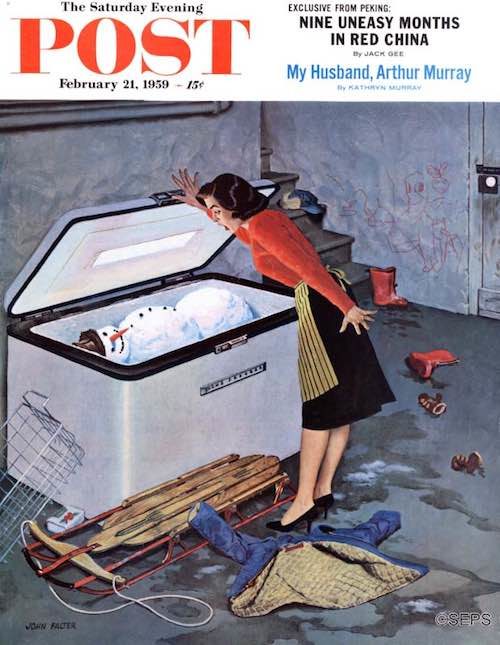
John Falter
February 21, 1959
This cover by John Falter has to be one of the oddest the Post has featured. It has always seemed a little like the start of a horror movie to me. The mom finds a snowman in the basement freezer and she assumes it’s dead, but the cold has kept it alive and it attacks her. The movie’s tagline: He’ll be back again some day.
Today Is National Banana Bread Day
I don’t know why people insist on putting walnuts in banana bread, ruining what is otherwise a terrific dessert and/or snack, but here’s Curtis Stone’s recipe, which seems to go out of its way to mention that it features “lots of toasted walnuts,” just to irritate me.
Here’s a recipe that doesn’t have any walnuts at all but does include chocolate chips, and this recipe uses, well, just bananas.
Next Week’s Holidays and Events
National Sword Swallower’s Day (February 24)
It’s great that sword swallowers have a day all to themselves, but I feel the need to say “don’t try this at home.”
National Pig Day (March 1)
How does one celebrate this day without actually eating something made from a pig, which would be a rather cynical thing to do? Maybe by reading this story about Pigcasso, the pig who paints. Right now she only gets food rewards for her work, but I bet they could sell one of the paintings for a lot of money and really bring home the bacon.
(Sorry about that.)
News of the Week: Teens Are Stupid, Pencils Are Cool, and Everybody Loves Jiffy Pop
I’ll Take “Things You Shouldn’t Put in Your Mouth” for $200, Alex

Kids and teens often do dumb things. I know I did, but looking back, I don’t think I ever ate poison.
Have you seen the new hip craze that’s sweeping the online nation? It’s called the “Tide Pod Challenge.” Teens are filming themselves putting Tide laundry detergent pods in their mouths. Now, the kids aren’t actually swallowing the detergent, but let me repeat, kids are putting Tide laundry detergent in their mouths.
How do these things start, and why do kids go along with them? I’m longing for the days when teens just ate live goldfish or cinnamon.
Please kids, don’t eat Tide Pods. Tide Pods are for cleaning your clothes. There are many great rules to live your life by, and one of the best is this: Never eat something used to clean your laundry. If you won’t listen to me, listen to Gronk!
What’s next, the Liquid-Plumr Challenge? Teens eating books? Old alarm clocks? Pencils?
Write On

Don’t eat pencils. Instead, write with them!
I bought pencils not too long ago, for the first time in many years. I still use pens every single day (the Uni-ball 207, if you’re curious) because I simply refuse to go “all-digital,” but pencils are something I gave up when I left school. However, I came across a pencil community online (yes, there are online pencil communities), and it inspired me to buy a box of the Palomino Blackwing Pearls, which are some of the nicest pencils you can buy — firmer than the standard Blackwing but softer than the Blackwing 602.
If your eyes haven’t glazed over yet and you’re actually interested in pencils, The New York Times Magazine has a terrific look at one of the last pencil factories in the United States. Not only does the article tell you more about pencils than you ever thought you’d be interested in, but the photographs are quite beautiful.
Once you’re done with that look at how one everyday item is made, take a look at this piece about another one, the common drinking straw, which some people want to abolish forever.
Mystery Oreos
I have a terrible track record when it comes to food contests. I don’t mean cooking contests; I mean contests where you suggest new versions of current food products. I keep entering those competitions where you think of new flavors for potato chips or candy or oatmeal and I never, ever win. And the flavors that do win? Some are okay, but others are … gah. I know mine would taste better!
But I think I’ve uncovered the secret of Mystery Oreos, the new contest Nabisco has launched where you have to guess the flavor of the filling. I know I’m going to win that $50,000! I’m spending the money already!
Never mind, the contest is over. Oh well. The new flavor? Here’s the answer. I don’t know if this is going to be a regular flavor of Oreos from now on, but if not, you still have 97 other flavors to choose from. I still like the original.
And Now, a Cartoon
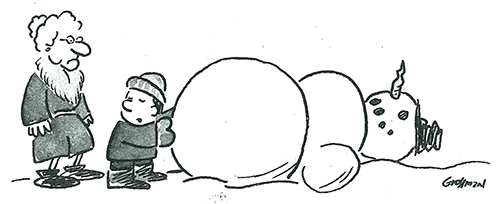
This is from the January/February 1980 issue of the Post. I just find the phrase “snow wino” to be really funny for some reason. We’ve got more winter cartoons here.
RIP Keith Jackson, Dolores O’Riordan, and Doreen Tracey
Keith Jackson was a veteran sportscaster best known for calling college basketball games on ABC. Over his 40-year career at the network, he also did play-by-play on Wide World of Sports and Monday Night Football, as well as various World Series and Olympics telecasts. He died last Friday at the age of 89.
Dolores O’Riordan was the lead singer of the Cranberries, known for such songs as “Dreams” (which has been played in hundreds of TV shows and movies), “Linger,” and “Zombie.” She died Monday at the age of 46.
Doreen Tracey was one of the original Mouseketeers on the 1955–59 kids show The Mickey Mouse Club. She later went on to work in music for people like Frank Zappa and the Doobie Brothers. She died last week at the age of 74.
The Best and the Worst

The Best: Twitter is good for one thing and one thing only: dog pictures and videos. In this one, a dog keeps himself very busy and very happy by sliding down a hill on a sled and then dragging the sled up the hill and doing it all over again. (And here are some great Post covers that feature dogs and sleds.)
The Worst: On the other hand, while we love dogs and often treat them as members of the family, we might not want to know what they’re thinking, which is something we could find out in 10 years if this translator that can help dogs speak human becomes a reality.
This sounds like the first stage of a sci-fi movie, where dogs eventually take over the planet and put all of us on leashes. TV would show endless repeats of Lassie, and there would be dog food vending machines everywhere.
This Week in History
Today Show Premieres (January 14, 1952)
Dave Garroway was the first host of the long-running NBC morning show. Here are the first 13 minutes. I’d love to see those stomach microphones make a comeback.
Edgar Allan Poe Born (January 19, 1809)
The master of the psychological horror story and inventor of the modern detective story was born in Boston but moved to Richmond, Virginia, at the age of 3 after both of his parents died. He later moved to Baltimore and inspired a football team.
This Week in Saturday Evening Post History: Mr. Fix-It (January 14, 1956)
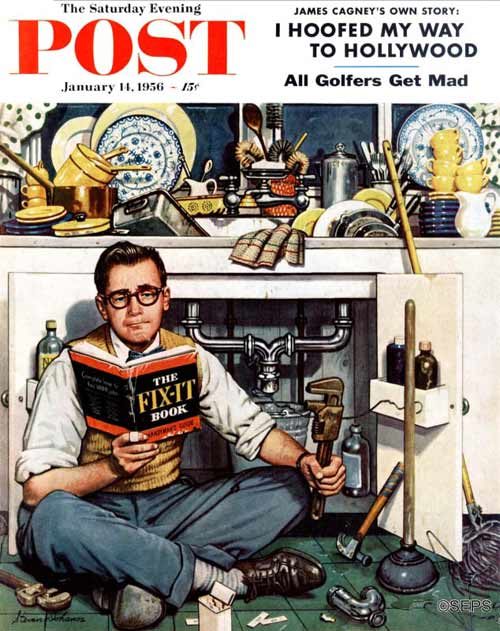
Stevan Dohanos
January 14, 1956
Sure, the husband (for some reason I’m assuming he’s a husband even though there’s no real proof of that — funny what an image can do) in this Stevan Dohanos cover is reading a book on how to fix his kitchen sink, but you know he’s not going to be successful. I identify with him. If your sink isn’t working or you need help changing the oil in your car, please don’t call me. But if you have an emergency and you need to figure out the difference between a noun and a verb or need to know who played the title role on a ’60s TV series, I’m your guy.
National Popcorn Day
When I was a kid, the only popcorn that would make was Jiffy Pop. There was just something about that moment when the kernels began to pop and the silver foil began to rise. It’s still around and is a lot more fun to make than just throwing a packet in a microwave or opening a bag. Though I don’t remember it being this much fun.
Next Week’s Holidays and Events
National Hugging Day (January 21)
It would be great to hug someone this day, but the way things are now, you might want to ask first.
Australia Day (January 26)
This is a national holiday in Australia. It celebrates the arrival of the First Fleet of British ships at New South Wales in 1788. In unrelated Australia news, the Australian Open is currently going on in Melbourne.
News of the Week: Everything’s Frozen, Fieri’s Is Closing, and Hydrox Cookies Are Still Around
Walking in a Winter Wonderland
Oh boy is it cold. It’s North Pole cold. It’s Swanson-TV-dinner-that’s-been-in-the-back-of-your-freezer-for-a-year cold. It’s cold like you read about in Cold Illustrated, the magazine for people who like when it’s cold. As I type these words, it’s 19 degrees in the Boston area, which is actually balmy, considering we’ve been dealing with single-digit temps and incredible wind chills the past couple of weeks. When you read this, we’ll probably be under a foot of snow, thanks to something called a “bombogenesis” or “bomb cyclone”, the entire region encrusted in layers of white and ice.
That’s how Niagara Falls looks right now, as these stunning pictures show. Erie, Pennsylvania has been buried in snow for days, breaking a record, and more is on the way. And the brutal cold in Minneapolis is making driving and walking really difficult.
This is the part where I make a contrast with the snow and tell you what it’s like in places like Florida and Georgia, but sorry, it’s snowing there too.
Flavortown Closes
If you watch the Food Network at all, you’ll notice that Guy Fieri is everywhere. He’s trying to beat Bobby Flay for the number of shows hosted. That number currently hovers around 47. But one place Fieri will no longer be seen is New York City’s Times Square.
Guy’s American Kitchen & Bar in Times Square closed for good after New Year’s Eve. The place opened in 2012 and was quite popular with tourists.
No word from Fieri on why he’s closing the restaurant. The devastating zero-star review from Pete Wells at The New York Times, where Wells asked Fieri a series of questions about the food and the service, probably didn’t help, but I can’t imagine that it’s the reason the place has closed. That was five years ago.
Fieri still has several other restaurants around the world.
Rockwell’s Door Opens
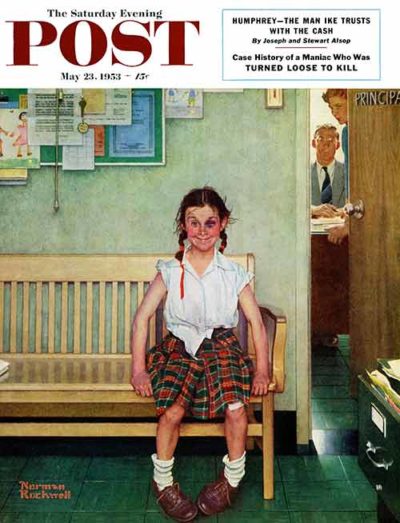
Norman Rockwell
From May 23, 1953
The door seen in the iconic Norman Rockwell Post cover Triumph in Defeat (some might know it as the Shiner or Girl with the Black Eye painting) is being preserved.
The Cambridge, New York, school that served as the setting for the painting is being renovated, and teacher Steve Butz wanted to make sure the principal’s office door seen in the painting would survive. It’s now part of a special exhibit, housed in glass near the school’s library.
By the way, the girl in the painting, the 11-year-old daughter of Rockwell’s lawyer, didn’t really have a black eye. Rockwell had to duplicate what a black eye looked like but was having trouble with the color. So he put out a call for someone who had a black eye, and a Massachusetts boy named Tommy just happened to have two of them. His dad drove him to the school so Rockwell could see what the eyes looked like.
The moral to this story is clear: Kids should get into fights so they can be part of American history.
How Do You Say “2018”?
Maybe my memory is wrong, but I remember when everyone used to pronounce a year like 2018 as “two thousand eighteen.” I don’t remember anyone saying “twenty-oh-four”; it was “two thousand four” (or maybe “two thousand and four”). But I’ve noticed that it’s now more common to hear “twenty eighteen,” and it’s something I don’t quite get. While you could make the logical argument that this pronunciation keeps it consistent with decades past (“nineteen seventy-two,” “nineteen ninety-nine,” etc.), I still refuse to do it. I’m not going to say “twenty eighteen.”
After all, what’s the title of that Stanley Kubrick movie about space?
Gone Away Is the Blue Bird
The Library of Congress has announced that it will no longer keep an archive of every single public tweet that is posted on Twitter. What, you didn’t know that the Library of Congress was keeping an archive of every tweet?
On January 1, the LOC began preserving tweets on a selective basis — only the ones they think are worth keeping as a historical record of the online service. But don’t worry, the picture you posted of that really great ham sandwich you had in the summer of 2013 will still be in the Library of Congress for future scholars to study.
People We Lost in 2017
A lot of publications and news shows do a year-end roundup of all of the famous people who died during the year, but no one does it better than CBS Sunday Morning.
As an addendum to that extensive list, I would add Maura Jacobson, who created crossword puzzles for places like New York magazine and The New York Times for more than 30 years. She died Christmas Day at the age of 91. And Peggy Cummins, the actress best known for her role in the classic crime film Gun Crazy — which was based on a MacKinlay Kantor short story published in the February 3, 1940, issue of the Post — who died last Friday at the age of 92.
The Best and the Worst
Best: I know we’re well into two thousand eighteen, but how about one more look back at last year? Dave Barry’s Year in Review is always a great, funny way to end the year.
Worst: I mentioned CBS Sunday Morning earlier, and former host Charles Osgood announced this week that he is retiring from his four-times-a-day radio show The Osgood Files. In this interview with Alex Silverman at WCBS, Osgood says that he’s not only dealing with two types of cancer, but his family has noticed he has slowed down a bit. He says he’ll still do a podcast now and then, but he’s no longer going to do a regular show. Osgood has been at WCBS for 50 years.
In the interview, Osgood mentions how great a country America is, and here’s a piece he wrote for the Post in 2009 that expands on that.
This Week in History
Hydrox Cookies Debut (January 1, 1910)
Did you know that Hydrox cookies are still around? I haven’t noticed them on my local store shelves in years — I would have bought them to refresh my memory on how they compare to Oreos — but you can still buy them in stores and online, thanks to a clever businessman who scooped up the Hydrox trademark for his company Leaf Brands when it became available a few years ago.
President George Washington Delivers First State of the Union (January 4, 1790)
It was originally called a Message to a Joint Session of Congress, and Washington made it from Federal Hall in New York City.
This Week in Saturday Evening Post History: Hot Pursuit Turns Cold (January 3, 1959)
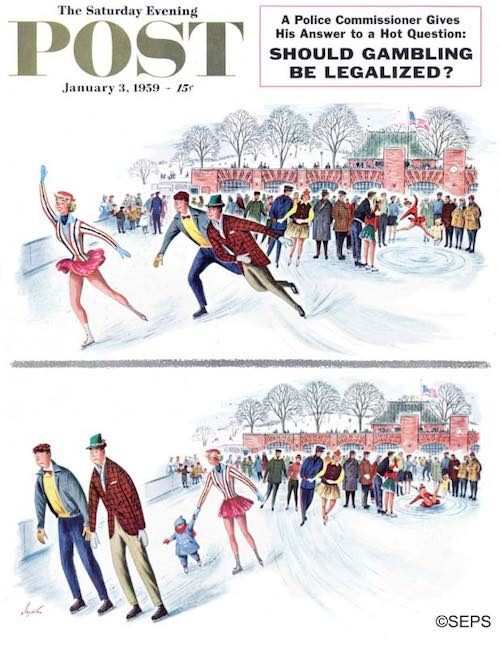
Constantin Alajalov
January 3, 1959
Hot Pursuit Turns Cold
Constantin Alajalov
January 3, 1959
I usually understand magazine covers, but this one has me baffled. It’s from Constantin Alajálov and depicts a winter skating scene. I get that the two men are trying to pursue the attractive female on skates in the first panel, but in the second panel, she’s behind the men and suddenly has a child. It’s almost as if there’s a panel of the painting missing. Or does the female skater have magical powers a la Samantha Stephens on Bewitched? Or maybe I’m just a dolt who doesn’t understand it? (Note: Me being a dolt is a distinct possibility.)
Later On, We’ll Conspire … As We Dream by the Fire
I had a post all set to celebrate National Whipped Cream Day, which is today. But then I thought, who the heck wants to think about frozen desserts when half the country feels like a frozen dessert? This is a time for cozy fires and comfort foods, so I decided to help you out by celebrating something I’ve talked about in past years: National Soup Month.
Chicken noodle soup is the ultimate winter soup, and here’s Curtis Stone’s recipe. How about something from Melissa d’Arabian, who isn’t on half as many Food Network shows as Guy Fieri? Here’s her recipe for Rich Roasted Tomato Soup. My mom used to love split pea soup, and here’s a recipe for a classic onion soup from Rachael Ray, with a good amount of golden cheese melted on the top of crusty bread.
Stay warm!
Next Week’s Holidays and Events
Epiphany (January 6)
The Christian holiday “celebrates the revelation of God incarnate as Jesus Christ” 12 days after Christmas. Don’t be surprised if you awaken to the sound of drummers drumming this Saturday, because recognition of Epiphany is the source of that incessant carol “The Twelve Day of Christmas.” It’s also the day that many families consider the official end of the Christmas season and take down their trees.
Letter Writing Week (January 7–13)
I’ve mentioned many times in this column how much I think everyone should get off social media and start writing letters again, so this is the perfect week to start doing just that. And if you need some reasons why you should keep writing letters, read Nicholas Gilmore’s excellent piece.
News of the Week: Goodbyes to 2017, Resolutions for 2018, and Lost Letters from 1944
A List of Lists
According to a scientific poll that I just made up, 99.4 percent of all people love lists. We love thinking about and debating the best this and the best that of all time, or the worst this and that, or the most overrated and underrated. And the end of a year makes us happy because that’s when we get an avalanche of lists, lists, lists.
NPR has a great interactive list of the best books of the year, and the staff of The Atlantic picks their favorite books too. The magazine also lists their 50 favorite podcasts of 2017. There are approximately 9 million best-of TV lists, including these from David Bianculli at NPR, The New Yorker’s Emily Nussbaum, and Vulture‘s Matt Zoller Seitz. The New York Times has its list of the best movies, and here’s USA Today’s list.
Looking for “worst” lists because they can be the most fun to read? The A.V. Club picks the 20 worst films of the year, Time has the 10 worst songs of the year, and TVLine has their picks for the 10 worst TV shows. Matt Zoller Seitz isn’t going to be happy that the show he picked as the very best of 2017 is one of the worst on TVLine‘s list.
We have some lists here at the Post too, including our most popular articles of the year, the best cartoons, and our most popular cover collections of 2017.
My favorite Post cover of the year is on the November/December issue, and it’s actually from 1957.
In 2018, I Will …
There’s only one thing more annoying than people who tell you what their New Year’s resolutions are, and that’s the people who tell you that they don’t make New Year’s resolutions. Apparently these people live golden, flawless lives and don’t need to make any changes.
I get it. You don’t want to make resolutions because it’s a lot of pressure, it’s too formal, too cliché, and besides, “everybody does it.” But isn’t it natural to take stock of your life at the end of a year, to look back at what has happened the past 12 months and think of what the new year holds? It’s the end of December and you’re organizing things for January, planning, hoping. Even if you’re not consciously thinking “these are my resolutions” and writing them down, you’re still thinking of making changes in the new year.
What do you think is the most popular resolution for 2018? You might think it’s to lose weight, save money, or exercise more (hey, those have been my top three every year since 1997!), but it’s actually something else, according to this Marist poll.
If you want to know how you can stick to your resolutions, Fast Company has some tips. Hint: It actually does help if you write them down.
The X-Files Is Back (Again)
The X-Files reboot from last year was met with a mixture of excitement and (ultimately) disappointment. A couple of the episodes were good, but I think overall, fans wanted something a little bit more or even different. Judging by this trailer for the new season that starts January 3 on Fox, the show knows that. Looks pretty good!
RIP Rose Marie, Dick Enberg, and Dominic Frontiere
Rose Marie was a star for 90 years (!), since she was a little girl, singing and dancing and acting on stage and in movies as “Baby Rose Marie,” but she’s probably best known to TV fans for her role as writer Sally Rogers on The Dick Van Dyke Show. She had a critically-acclaimed documentary about her life released this year titled Wait for Your Laugh. She died yesterday at the age of 94.
Dick Enberg was a legendary sportscaster who covered 28 Wimbledons, 10 Super Bowls, Major League Baseball games, and endless college football games. He died last week at the age of 82.
Dominic Frontiere composed many themes for classic TV shows, including The Outer Limits, The Rat Patrol, The Flying Nun, The Invaders, That Girl, and Vega$, as well as many movie themes. He died last Thursday at the age of 86.
The Best and the Worst
Best: My favorite stories of the week both involve letters from World War II.
In Greenfield, Massachusetts, Francesca Passiglia found a love letter inside the walls of her home while it was undergoing renovations. It was dated April 19, 1944, from a man named Walter to a woman named Betty. Passiglia asked the Greenfield Police Department to help her solve the mystery of Walter and Betty and the department (of course) turned to Facebook. They found out who Betty was, but they’re still looking for Walter. It seems Betty dated two Walters in the ’40s.
And CBS News Sunday Morning had a great segment on Donna Reed and the letters that overseas soldiers wrote to her during World War II. After Reed died in 1986, her daughter found them. There were 350 in all and Reed had saved them for 40 years:
Worst: The worst (and oddest) news of the week? Nestl\0xE9 has announced they’re getting out of the chocolate business! That’s like McDonald’s announcing they’re not going to sell cheeseburgers anymore. The company has decided to concentrate on their other products, including bottled water, coffee, cereal, and frozen foods.
This Week in History
Vincent Van Gogh Cuts Off His Ear for Some Reason (December 23, 1888)
Why did the artist do that? Turns out, nobody really knows the answer. He could have gone crazy, been mad at a rival, or maybe he simply didn’t like having two ears. A more recent theory claims that Paul Gauguin (yes, the artist) lopped it off with a sword during an argument, and that van Gogh claimed to have done it himself to protect his friend. With friends like that …
Rod Serling Born (December 25, 1924)
Did you know that there’s a new Twilight Zone coming next year? You’re going to have to pay for it, though, as it will join Star Trek Discovery on CBS’s All Access streaming service.
This Week in Saturday Evening Post History: More Snow? (December 29, 1951)
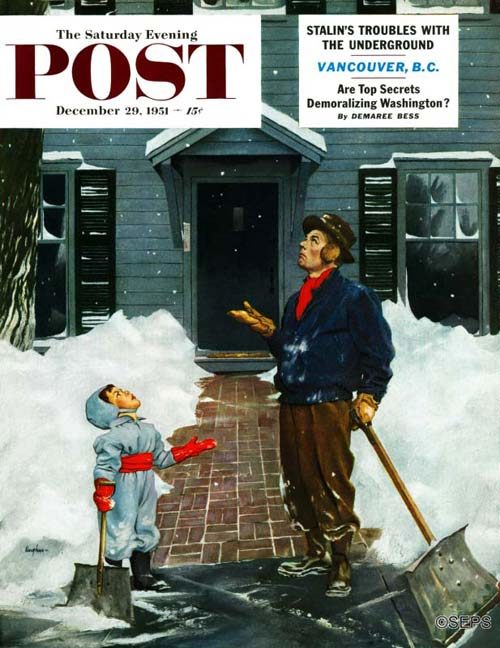
George Hughes
December 29, 1951
We’ve all been there — maybe you are there this week — in that moment when we finally finish shoveling the walkway and we notice it has started to snow once again and we’re going to have to shovel again in a few hours. This George Hughes cover captures that moment.
A Lot of People Are Saying This Right Now
Please, no more leftovers. pic.twitter.com/iXPk2K81Lm
— PEANUTS (@Snoopy) November 25, 2017
National Champagne Day
It makes sense that December 31, New Year’s Eve, is also National Champagne Day, since it’s probably the one day of the year that most people drink Champagne. In many countries, you can’t use the word Champagne on bottles unless the grapes were produced in the Champagne region of France, though there are some exceptions.
Esquire has a list of 11 great Champagne cocktail recipes, including the French 75, the Black Velvet, the Atomic Champagne Cocktail, and Ernest Hemingway’s Death in the Afternoon.
If you do open a bottle on New Year’s Eve while watching the ball drop in Times Square, please make sure you point it away from your guests’ faces. That could just ruin the whole night.
Happy New Year!
Next Week’s Holidays and Events
National Hangover Day (January 1)
If you celebrated National Champagne Day just a little too much, here are some remedies for the way you’re feeling, including eating a big breakfast, getting plenty of sleep, and staying hydrated.
The top suggestion on that list is “limit your alcohol intake,” but if that were the case, you wouldn’t be reading that list.
College Bowl Games (January 1)
If you haven’t been watching college football the past couple of weeks, you’ve missed the R+L Carriers New Orleans Bowl, the AutoNation Cure Bowl, the Cheribundi Tart Cherry Boca Raton Bowl, the Famous Idaho Potato Bowl, and the Starbucks Listerine National Bowl. Okay, I made up that last one, but the others are real.
Here’s a list of the games you can watch on New Year’s Day.
News of the Week: The Rockefeller Tree, Dangerous Toys, and Little Debbie Needs Your Help!
The Tree Has Arrived
How was your week? I pulled a muscle in my neck, had to get my stove fixed, and for the 32nd year in a row I wasn’t named People’s Sexiest Man Alive. But there is good news: The Christmas season has begun.
You might think the season officially begins when the red and green candy appears on supermarket shelves or when the department stores hang their wreaths, but it officially officially begins when the Christmas tree arrives on a truck in front of Rockefeller Center. It’s almost as if you’re given permission to call it the holiday season and listen to Christmas music when the big tree gets to New York City. Fa-la-la-la-la, la-la-la-la.
The lighting of the 75-foot Norway spruce happens the night of November 29 on NBC.
Toys: The Good, the Bad, and the Ugly

Two different toy-related lists were released this week, one naughty and one nice.
The consumer safety group WATCH (World Against Toys Causing Harm, which sounds like the name of a secret team of superheroes) has released their annual list of the 10 most dangerous toys. This year’s list includes the Wonder Woman Battle-Action Sword, Jetts Heel Wheels, the Slackers Slackline Classic Kit, and the Itty Bittys Baby Plush Stacking Toy. Yes, even toys with the word “plush” in them can be dangerous.
But this week also saw the induction of several toys into the National Toy Hall of Fame. The three inductees are the board game Clue, Wiffle Balls, and paper airplanes. What finalists didn’t make it this year? My Little Pony, Risk, play food (toys that look like food), Transformers, PEZ dispensers, UNO, and sand.
That’s right, sand was a finalist this year. Sand.
Where Will Amazon Build Their New HQ?
That’s the big question every state is asking these days. Well, maybe not Hawaii, but many of the other 49 states. Amazon is going to build a second headquarters, and many cities have submitted plans to the online retailer with their best pitch.
The Wall Street Journal has done a study to figure out which city would be the best fit for Amazon, taking into account such criteria as cost of living, taxes, access to college graduates and tech help, and culture. The paper says that the top three contenders are Dallas, Boston, and Washington, D.C.
What the company should do is build it at the North Pole. There’s plenty of land, there might be some elves looking for work, and people sort of think of Amazon as Santa Claus already.
It Better Not Be the Oatmeal Cremes
Which one? pic.twitter.com/L0JNW7SAVL
— Little Debbie (@LittleDebbie) November 8, 2017
That’s a tweet the snack company sent out recently. They’re getting rid of one of their popular snacks, and they want to know from you which one should go (actually, they say “one gotta go” and boy is that an odd phrase). Of course, there’s no real reason why they have to get rid of one of the snacks. It’s clearly a publicity thing, something they want to become a “meme” and “go viral.” Writer R. L. Stine likes the Oatmeal Creme Pies, and William Shatner wants them all to stick around.
I think it’s obvious which one will be hitting the unemployment line. It’s the Honey Buns. No one has a heart black enough to get rid of a cake shaped like a Christmas tree, Oatmeal Creme Pies are too delicious, and Nutty Buddy rhymes, and everyone likes when foods rhyme. So Honey Buns gotta go.
RIP Liz Smith
Liz Smith was a journalist for 60 years and is best known for writing about celebrities and the culture of Hollywood and New York for various newspapers from 1976 to 2009, when she was let go from The New York Post at age 86. She died Sunday at the age of 94.
Here’s a great video interview with Smith at The New York Times, where she talks about her experiences with people like Frank Sinatra, Donald Trump, Katharine Hepburn, and Barbara Walters.
Casablanca at 75
The classic Humphrey Bogart/Ingrid Bergman drama premiered in New York in November of 1942. Bill Newcott talks about the film in this week’s edition of “Movies for the Rest of Us,” and on Sunday, CBS Sunday Morning did a story about the film and its dedicated fans, including interviews with the children of stars Bogart, Claude Rains, and Paul Henreid.
This Week in History
George S. Patton Born (November 11, 1885)
Post Archive Director Jeff Nilsson explains how General Patton was part of the century’s best-kept secret.
The Star Wars Holiday Special Airs (November 17, 1978)
I’m not even sure if this has been seen on television since it first aired. Maybe only a few times or in snippets here and there. But thanks to YouTube, you can watch the whole thing. Along with Harrison Ford, Mark Hamill, and Carrie Fisher, you get sketches with Bea Arthur, Art Carney, and Harvey Korman. Plus: Jefferson Starship!
This Week in Saturday Evening Post History: Squawking Turkey (November 13, 1915)
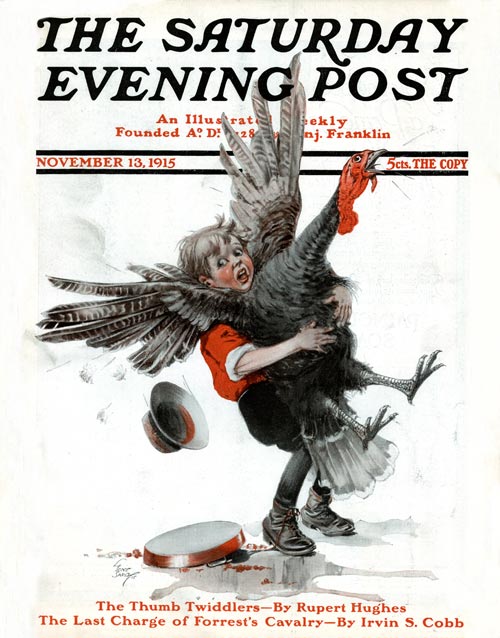
Tony Sarg
November 13, 1915
I’m trying to figure out how the scene in this cover by Tony Sarg unfolded. Why was a little kid sent to get a live turkey that’s even bigger than he is? What exactly is that on the ground, a pan and water?
“The Thumb Twiddlers” — mentioned below the picture — sounds like an article that could be written today about people addicted to smartphones and social media, but it’s actually a short story by writer and director Rupert Hughes, uncle of Howard.
Thanksgiving Recipes

Are you a traditionalist when it comes to Thanksgiving, or are you a bit daring? I’d like to think I’m the type of person who wants to try something new and out of the ordinary, maybe ham instead of turkey or Brussels sprouts or a pie made with a fruit I’ve never tried before. But when you get right down to it, I like my turkey and my mashed potatoes and the classic green bean casserole. Thank you, Dorcas Reilly!
But beyond those favorites, you’re going to need more for the day. Here’s a recipe for a sweet potato casserole, and here’s one for the perfect pie crust. Not sure how to cook your turkey? Here are some tips from McCormick, Food Network, and Melissa Clark at The New York Times.
If you have trouble cooking that turkey, you can always call the Butterball Turkey Talk-Line. They’ll tell you how long to cook your turkey, what to do if you bought your turkey in 1969, and what safety measures you should take for the stuffing.
Next Week’s Holidays and Events
World Hello Day (November 21)
This international holiday started in 1973, and the goal is for everyone on the planet to say “hello” to 10 people. And no, saying it to them on Facebook doesn’t count.
National Tie One On Day (November 22)
Macy’s Thanksgiving Day Parade (November 23)
While the turkey is cooking and the yams are yamming, you can turn the TV to NBC, where you’ll see the Macy’s Thanksgiving Day Parade, which NBC has televised every year since 1948. It starts at 9 a.m. Eastern.
Happy Thanksgiving!
Hollywood’s New Maestros: The Rock Stars Who Are Composing Film Scores
The score of a film is unlike a hit song. A movie score is in the background of the action — and usually instrumental. It sets the tone of the film without calling too much attention to itself. Film composers like John Barry, Ennio Morricone, and Henry Mancini made careers for themselves by creating rich soundscapes for cinema of every genre. Comprehensive orchestral training was requisite for composers in Hollywood for many years, but, increasingly, tinseltown has been importing rock and pop musicians to write scores.
There is a history of pop music in movies, but film collaborations from members of Radiohead, Daft Punk, Nine Inch Nails, and Arcade Fire in recent years are blending the mediums like never before. What possesses these rock stars to step out of the spotlight for the more concerted — and sometimes grueling — process of film scoring?
It could be the prospect of artistic growth. Graeme Thomson covered the rise of rock stars in movie music in The Guardian in 2009, venturing, “Although there’s next to no money to be made in writing for film, and all along the line the musician’s vision is subordinate to that of directors, editors and producers, the chance to be a mere cog in a much larger machine seems to offer welcome relief from the essentially solipsistic nature of songwriting.”
Just as a writer desires a prompt, artists of the indie rock world might crave boundaries for their creative instincts. Sometimes the results are groundbreaking.

Trent Reznor won an Oscar for his part in scoring The Social Network in 2010. The lead singer of Nine Inch Nails is known for a gritty brand of heavy rock, but his compositions for films like Gone Girl and The Girl With the Dragon Tattoo are more subdued and electronic.
Jonny Greenwood, lead guitarist of the Grammy-winning band Radiohead, has scored several of offbeat director Paul Thomas Anderson’s films. Greenwood started composing for Anderson in the 2007 film There Will Be Blood. Greenwood’s score is an unsettling and, at times, sparse and dissonant accompaniment to Anderson’s film that the New York Times has called the best film (so far) of the 21st century. Greenwood has scored all of Anderson’s films since: The Master, Inherent Vice, and the forthcoming Phantom Thread.
Reznor and Greenwood have garnered significant acclaim for their efforts, but reactions to musicians in the film industry haven’t always been so positive — particularly from career composers. In the ’90s, highly trained orchestrators bemoaned that film scoring was being taken over by amateurs. Many new to the field were missing out on important musical training due to new technologies that rendered comprehensive craftsmanship unnecessary. “And it’s the absence of those skills that many movie professionals believe is the primary reason for a paucity of good film music now,” lamented David Mermelstein in a 1997 article from the New York Times. In Mermelstein’s article, Jerry Goldsmith, composer of scores for Chinatown and Patton, joined several other Hollywood music greats in denouncing the “preponderance of dilettantes and sophomoric people in the business,” but they felt that real talent would ultimately win the day. Has it?
The popification of film scores can be traced back to the ’60s. Mike Nichols pioneered the mixing of popular music with cinema in 1967 with The Graduate. Nichols used Simon & Garfunkel’s folk tunes as a soundtrack to his coming-of-age film about disillusionment and isolation. This practice was brand new at the time, and it paid off: The Graduate was one of the highest-grossing films of the 1960s.

Afterwards, musicians trickled into the industry. Hans Zimmer was associated with several early new wave bands including The Buggles and Krisma before turning to films. Today he is best known as the prolific scorer of dozens of movies, including Pirates of the Caribbean and The Lion King. Tim Burton collaborator Danny Elfman got his start in Oingo Boingo, the eclectic group behind the songs “Dead Man’s Party” and “Weird Science.” Tunesmith Mark Mothersbaugh started in the cult ’80s group Devo. Mothersbaugh has collaborated with Wes Anderson on Bottle Rocket, Rushmore, and The Royal Tenenbaums in addition to his work in many family movies like Halloweentown, Hotel Transylvania, and Cloudy with a Chance of Meatballs. He has even scored several popular video games, namely in the Crash Bandicoot and Sims series. The ’80s and ’90s pop interlopers mostly left their groups for Hollywood pursuits.
These bandmates-turned-maestros signaled a shift in movie music, but it might not be the end of orchestration as we know it. Jon Burlingame teaches film music history at University of Southern California, and he’s been following Hollywood music trends for years. New music technology continues to give rise to original voices in cinema, and Burlingame believes this is good for the industry. However, he says, “There is an advantage to working with a composer who has a big toolbox. You should never count out the level of experience already in Hollywood.”
Composing a film score is still very different than writing a pop or rock song. According to Burlingame, the film composer’s task includes making music that underscores the emotion or drives the action or provides a musical counterpart to the location or time. He says, “These can be challenging prospects for someone who hasn’t worked in film before. You absolutely have to have a dramatic sense. Sometimes it’s an instinct; sometimes you can learn it.” Whatever that dramatic sense entails, it seems that the rock stars are learning it.
See our recent interview with film composer Hans Zimmer from the November/December issue.
The Bike Accident
Seconds after the accident, the teenager lay in the road near his damaged bike.
He’d been pedaling on a gravel shoulder, a guitar case strapped to his back, when he veered abruptly onto a two-lane street. The car struck him with a sickening thwunk, and he tumbled across the pavement, bike and body skidding, asphalt shaving his skin. When his momentum finally stopped, he looked at me, eyes wide. And he screamed.
“It’s okay!” I shouted, running from the sidewalk onto the street. “I’ll call 911 — it’s okay!”
I tapped my phone as the driver jerked onto the shoulder. He jogged to us — “You pulled onto the road!” — then gathered himself, directing traffic around the scene. A 911 operator took my call: Where are you? What’s the cross street? Is the victim conscious? Is he breathing okay?
He was conscious, though shaky, still sprawled in the road. He’d stopped screaming. As the minutes passed, he even joked about the rips in his new summer shorts. But he was still wincing and wheezing, the shock still draining his face. And then, as we waited for an ambulance, he did something that startled me.
He pulled his phone from his pocket and called his music teacher.
“Hi — I’m afraid I can’t make it to my lesson tonight,” he said, never mentioning the crash or the road rash that streaked his arms.
It was a strangely courteous gesture given the high-stress situation — like saying “thank you” and “please” while strapped in an electric chair.
So why make that call?
It was, I believe, a fundamental human response. The need to regain control when you’ve lost all control. And yet the entire incident exposed our lack of control, the random ways that lives intersect. Consider this: I’d never walked the route that placed me at the accident. My commuter train had halted one stop before my usual destination — an earlier Amtrak train had struck a pedestrian, causing gridlock — so I left the air-conditioned railcar for a hot walk home. Since I was wearing my workout clothes (the change in plans meant I couldn’t go to the gym), I strapped on my backpack and ran — all of which placed me in the exact spot to witness the crash and call 911.
Who knows? If I’m not there, maybe the driver flees the scene instead of helping. (After directing traffic, he left before the police arrived.) If the biker stops to scratch an itch, if he pedals faster or slower, maybe the accident never happens. Our futures can change in an instant. In June 2016, a woman died at Virginia Beach, Virginia, after being struck by a wind-blown umbrella. What are the odds?
Luck shapes our lives more than we care to admit. We take steps to protect ourselves: We wear seat belts, we wash our hands, we don’t vacation in war zones. But random events can pluck us from quiet safety, like wind whisking paper in a breeze. Wrong place, wrong time. Right place, right time. We are slaves to chance — and that can cause anxiety. In a survey on American fears released in October 2016 by Chapman University, two of the top four fears involved terrorism, that great invisible threat of modern life. Yet our odds of dying in a terrorist attack in the United States are 1 in 20 million.
We can use logic to diminish our fears, but we can’t entirely escape risk. As science writer Kayt Sukel notes in her book The Art of Risk, “There’s risk involved in what you decide to eat for breakfast and in accepting a marriage proposal.
There’s risk in going out in the world. And there’s risk in staying home. Risk is everywhere.” And sometimes we make risks, well, riskier, as the teenage biker made clear with one more surprising, supine comment.
“I wish I’d worn my helmet,” he said.
That’s right — he’d skipped an action he could control. And yet somehow, as his body tumbled across the blacktop, his head never hit the street.
Luck.
After the ambulance arrived, the EMTs helped him sit up. They placed him on a stretcher. Earlier, after I had called 911, an off-duty EMT drove by. She pulled over, asked him questions, comforted him, took his pulse. Another chance encounter, and another lesson: At their core, most people are kind.
When I finished answering questions for the police, my legs were shaking. I was dripping sweat, a combination of stress, heat, and my post-train run. My wife picked me up and drove me to my usual station, where I’d biked that morning. Yes, I’m a biker too, and I was leery of riding home. I could still see the collision, could hear the teenager’s scream, could feel the fear that widened his eyes. If I felt jittery, I can only imagine his anxiety the next time he straddles a bike.
But I see only one response to fear and to our powerlessness in the universe. And so I unlocked my bike, strapped on my helmet, and pedaled home on the asphalt trail.
Ken Budd has written for The New York Times, Smithsonian, McSweeney’s, and National Geographic and is the author of The Voluntourist. For more, visit thevoluntouristbook.com. Listen to an interview with author Ken Budd, where he recounts the events that led him to write this article.
This article is featured in the July/August 2017 issue of The Saturday Evening Post. Subscribe to the magazine for more art, inspiring stories, fiction, humor, and features from our archives.